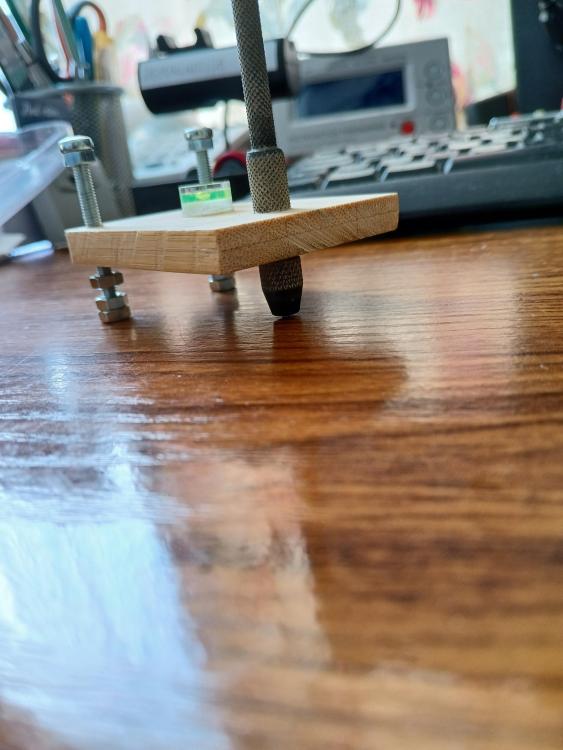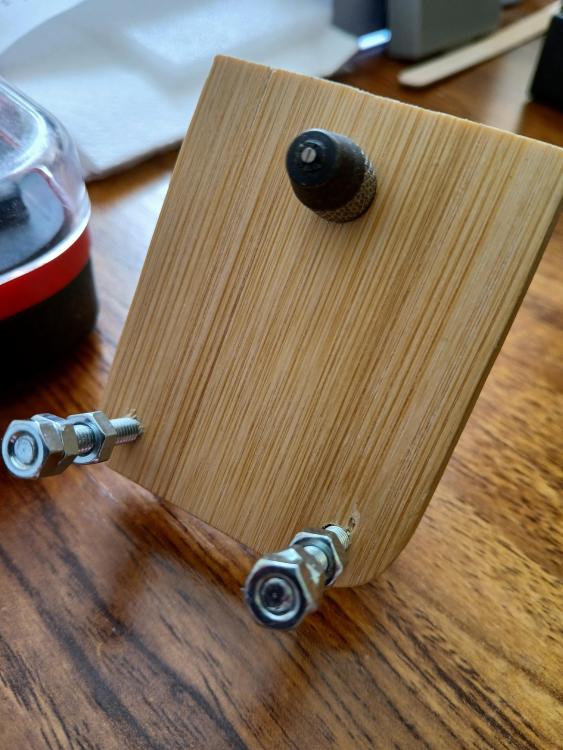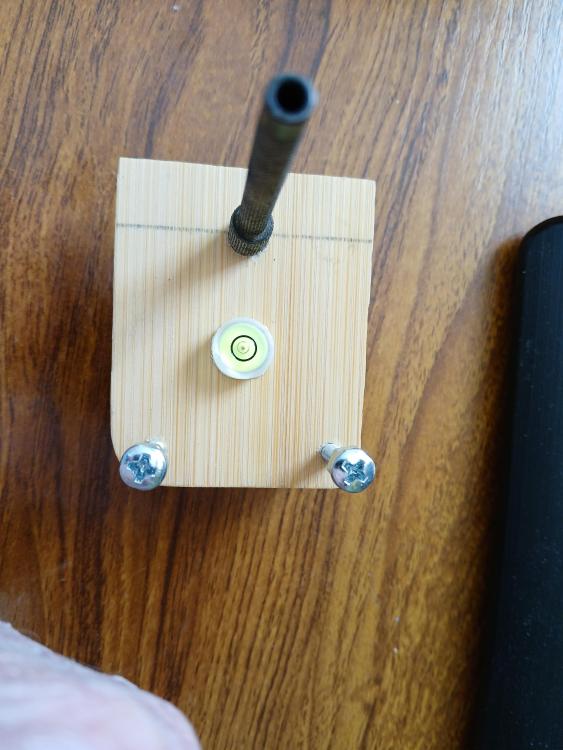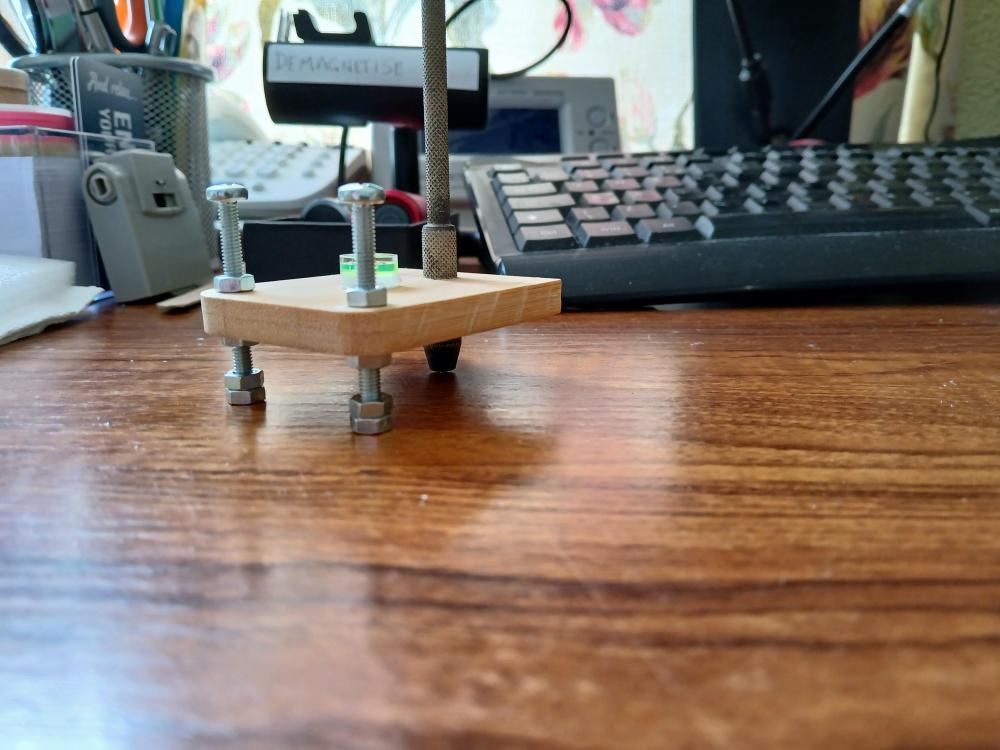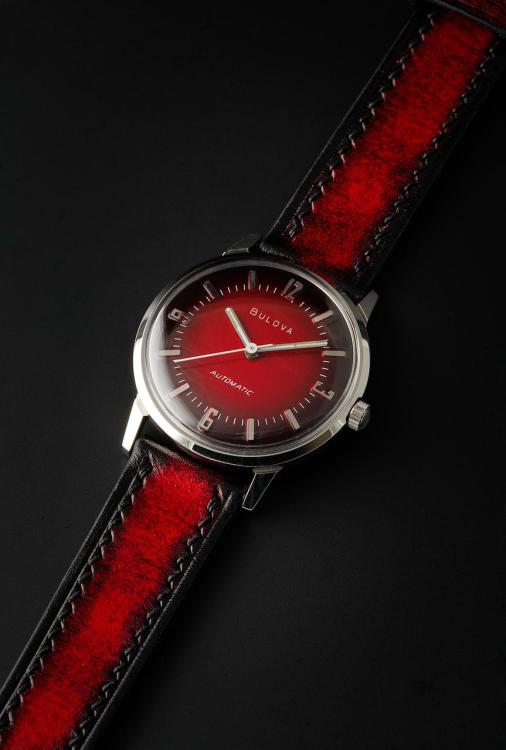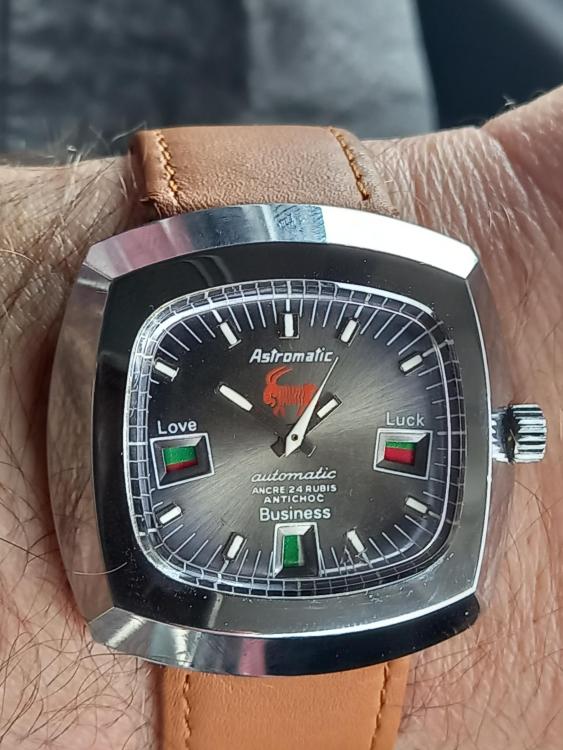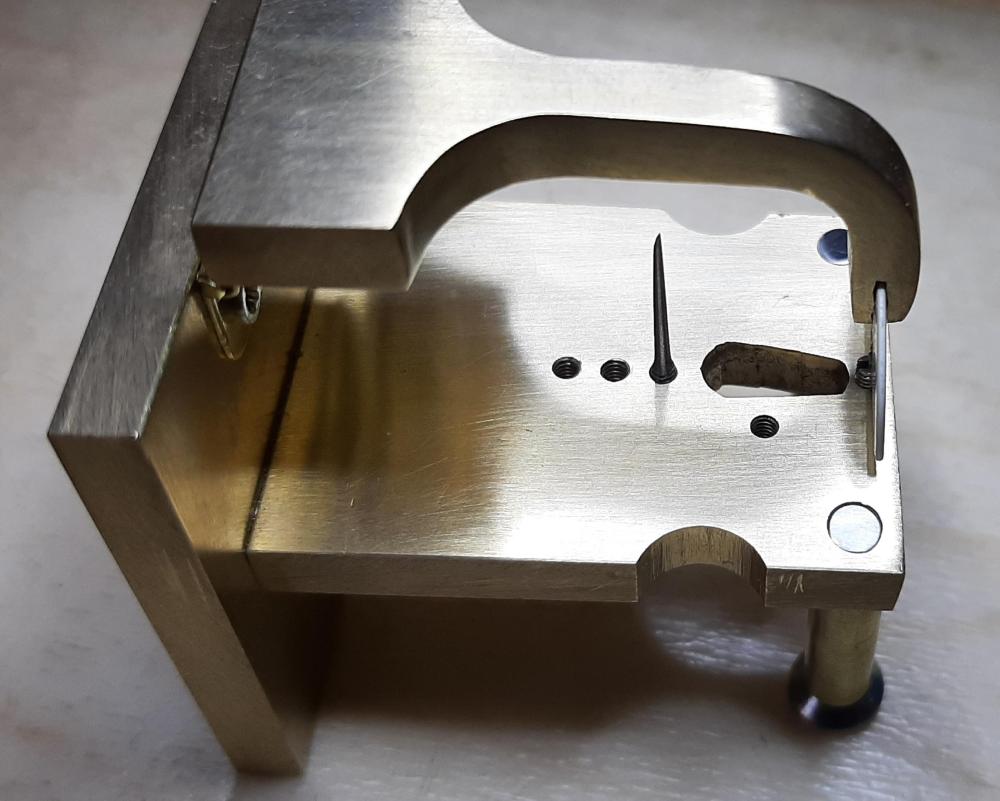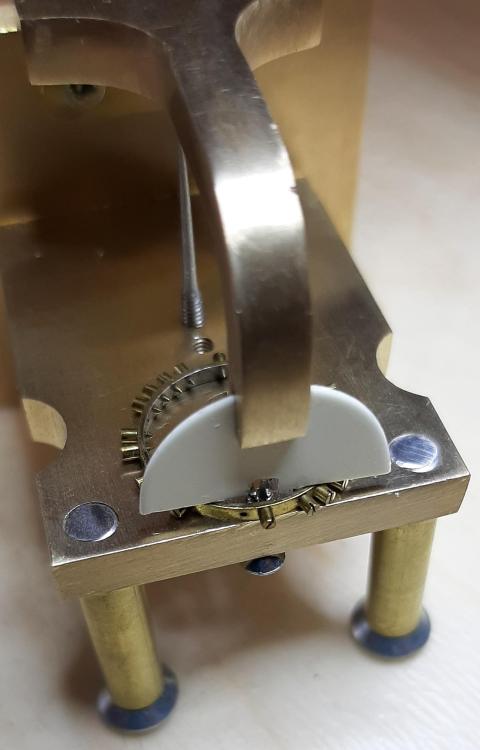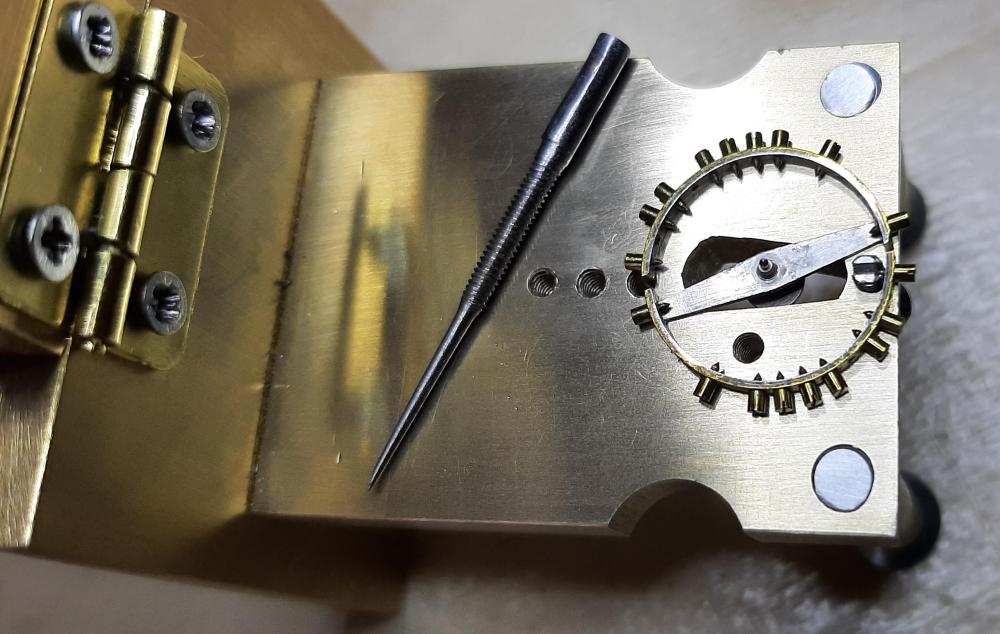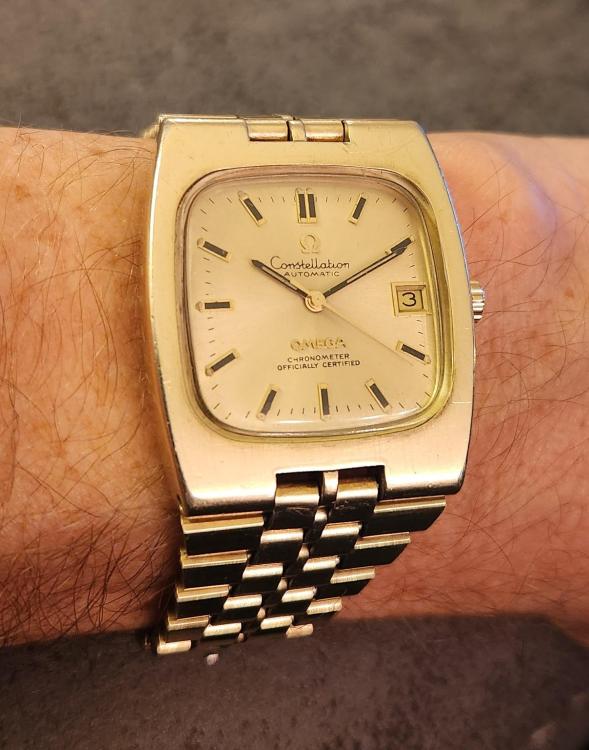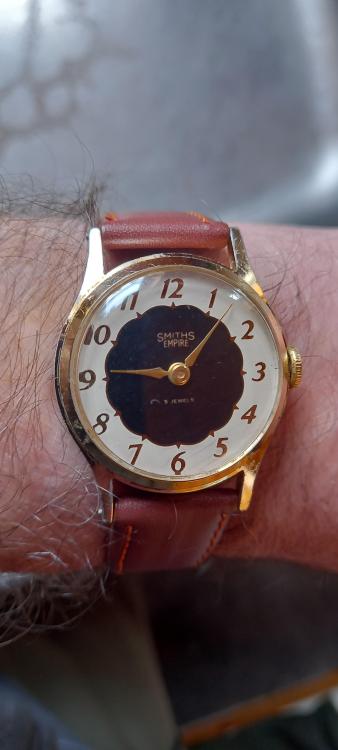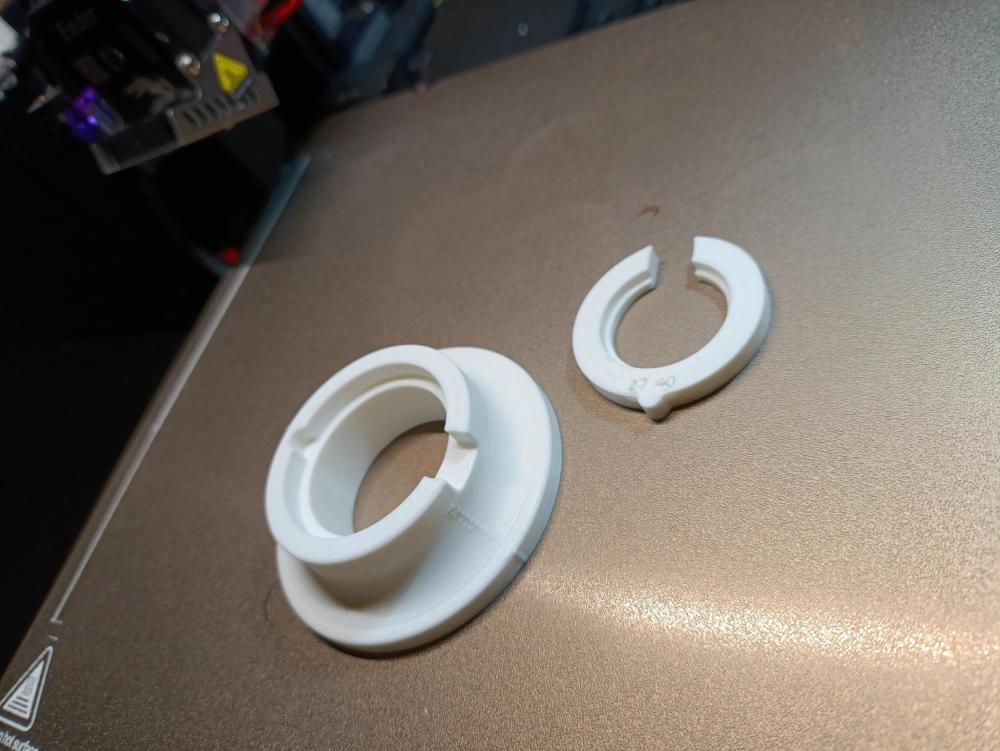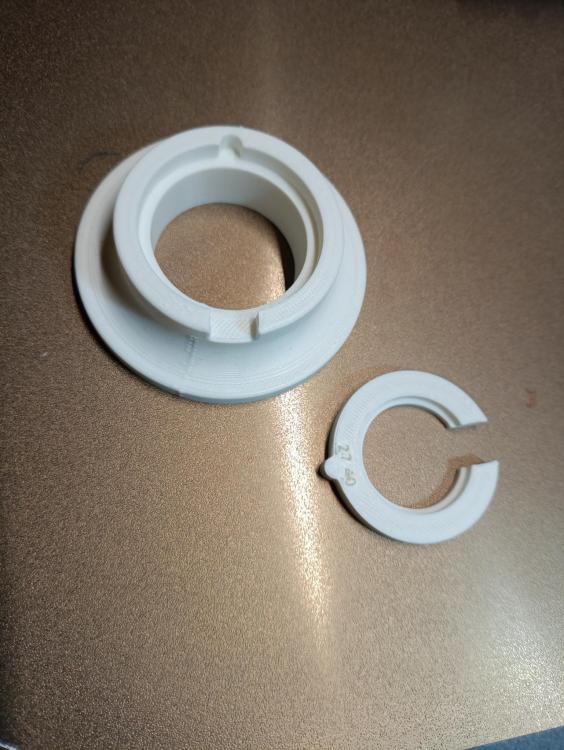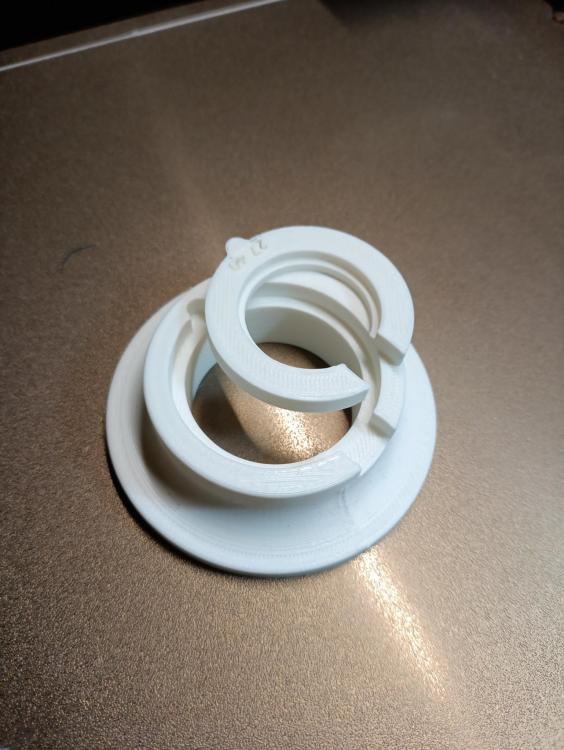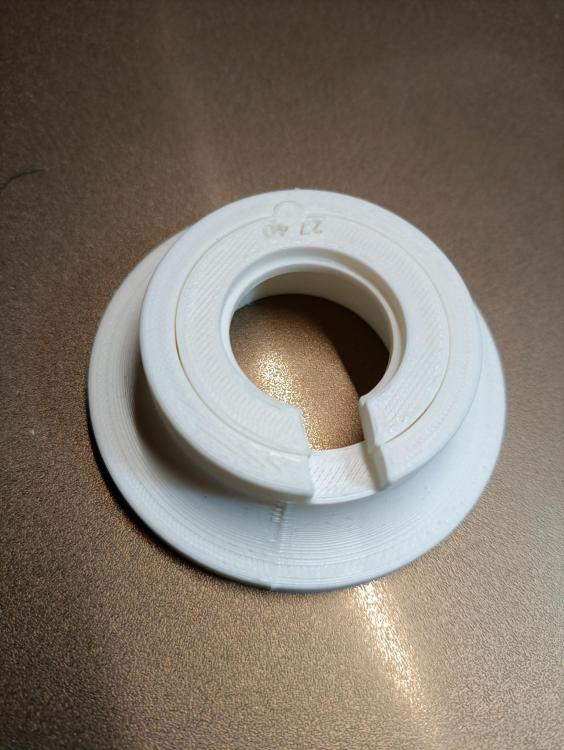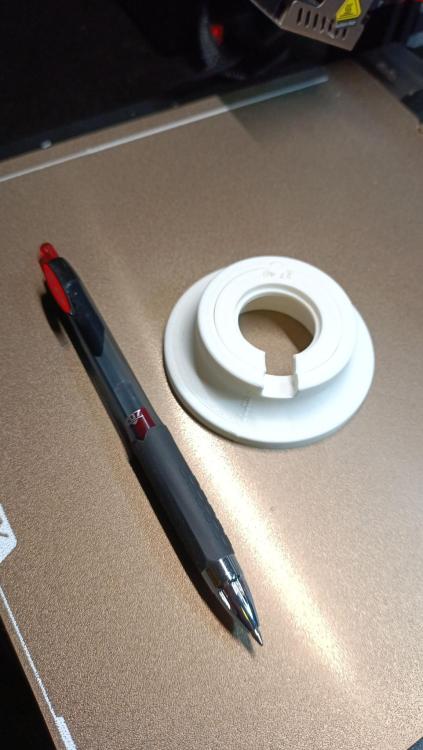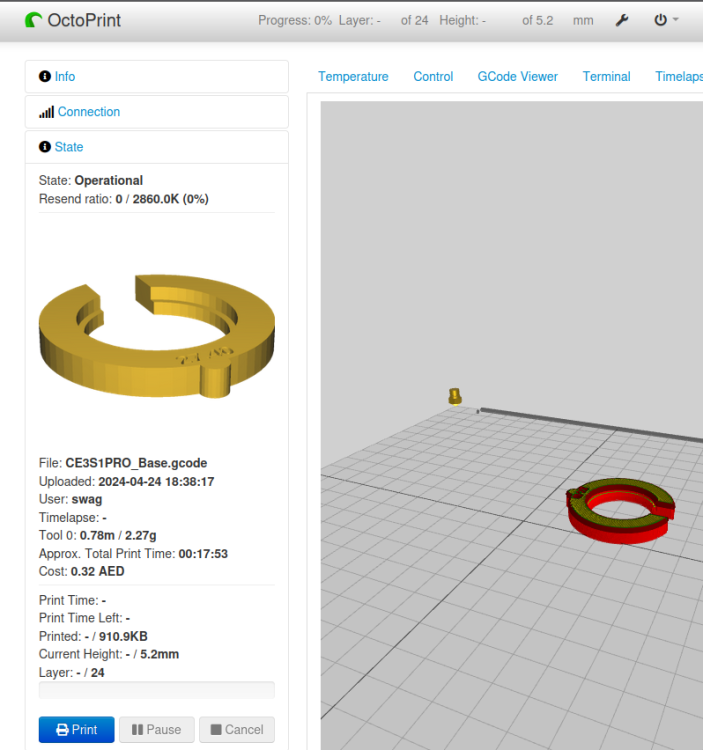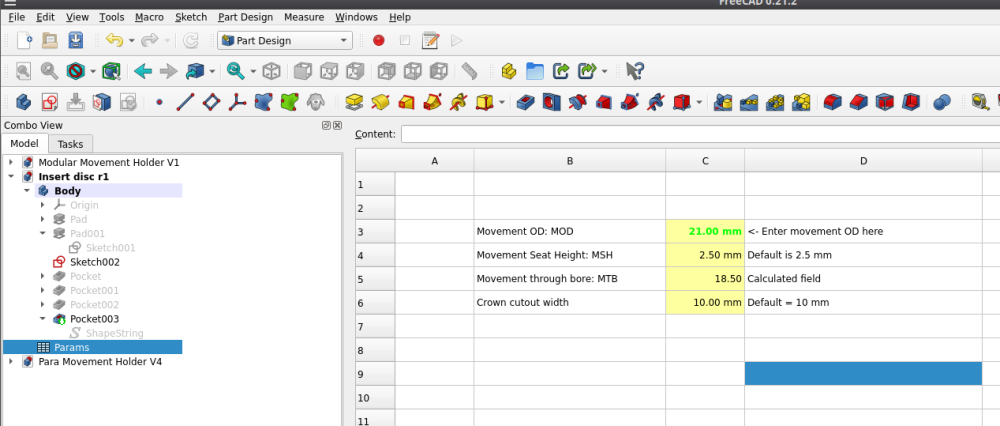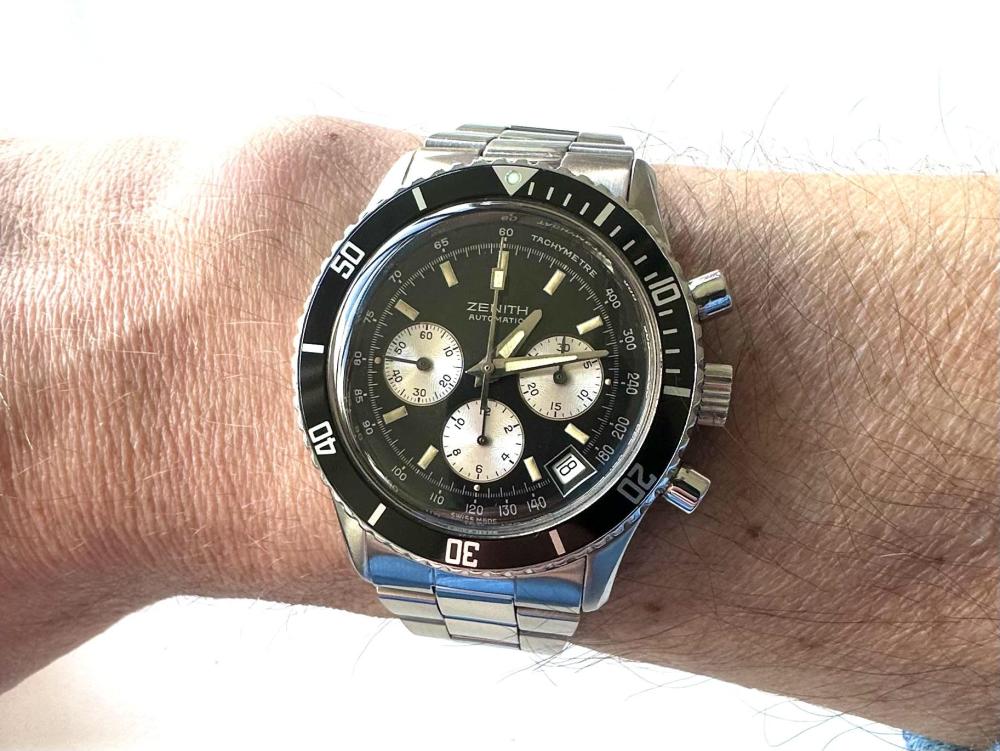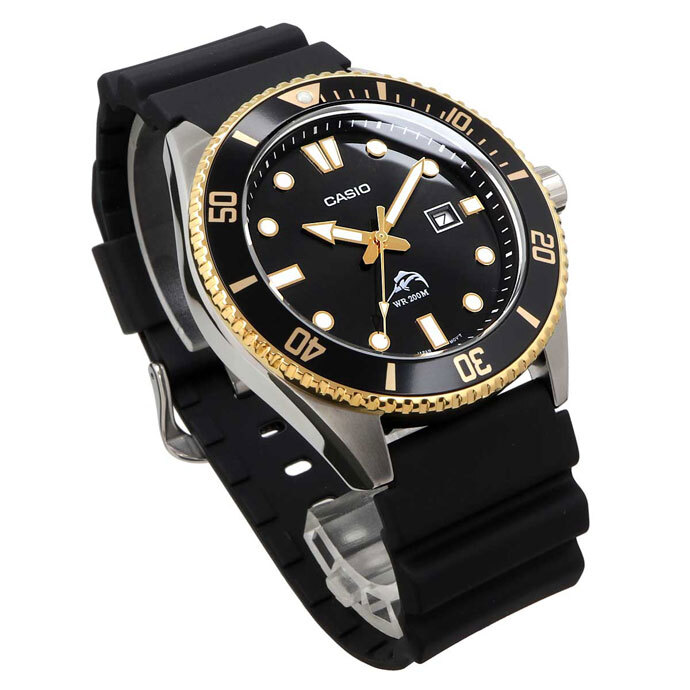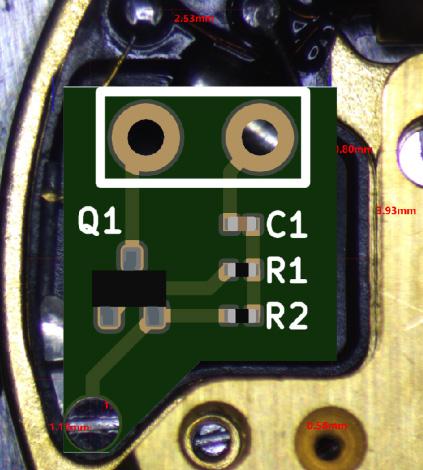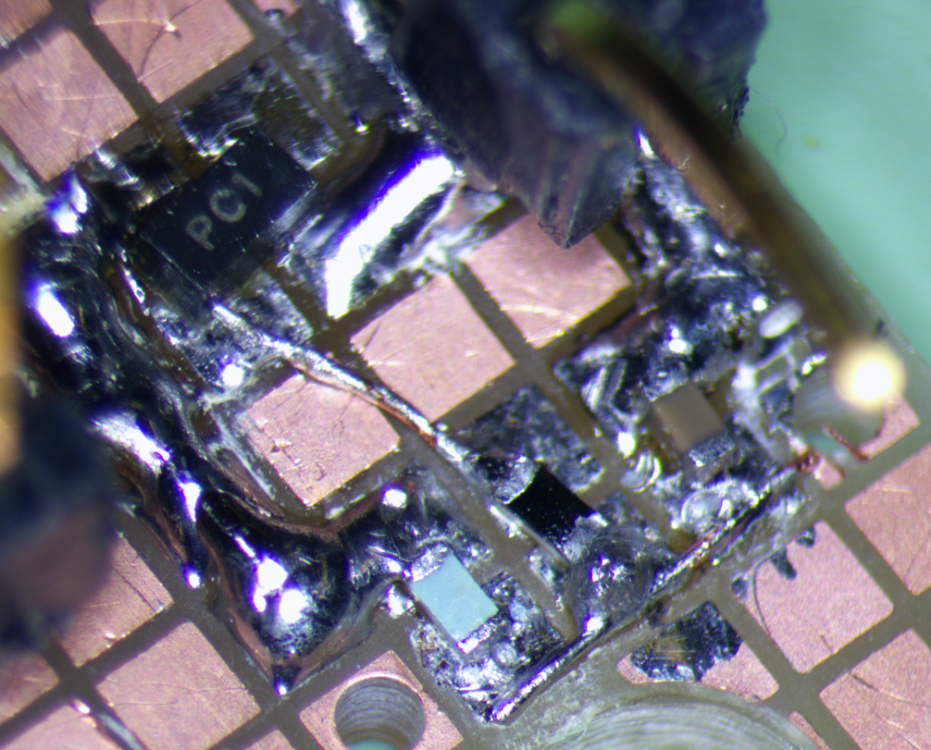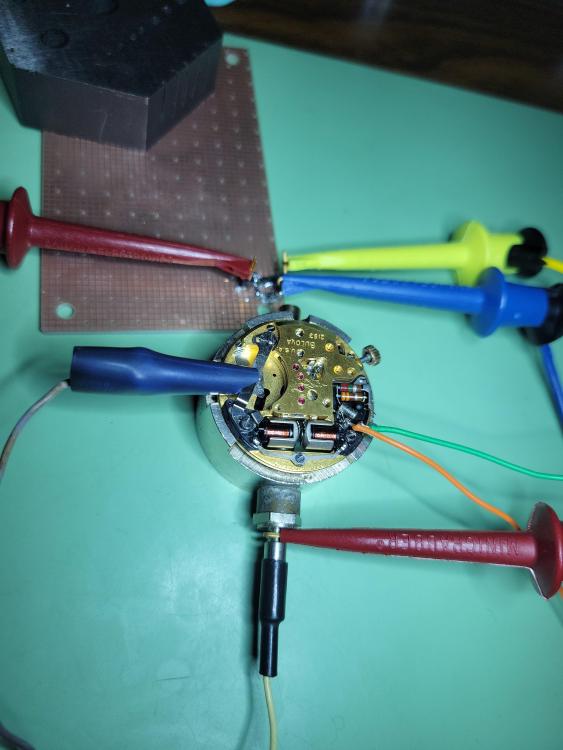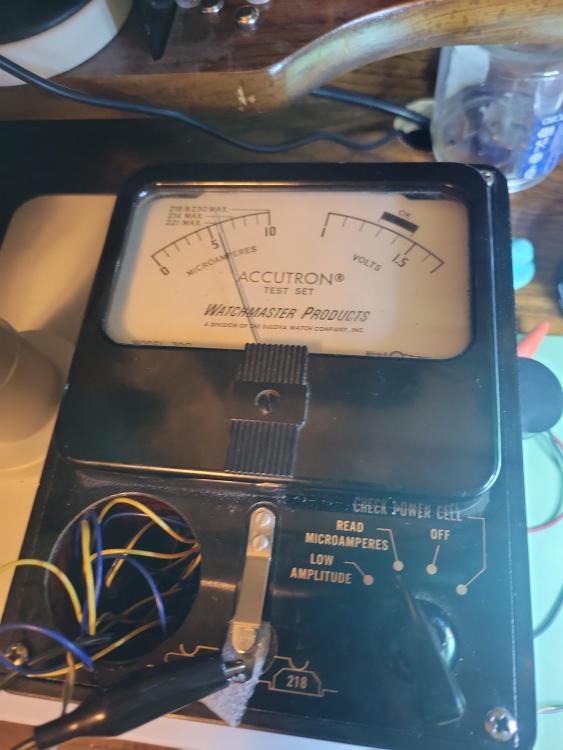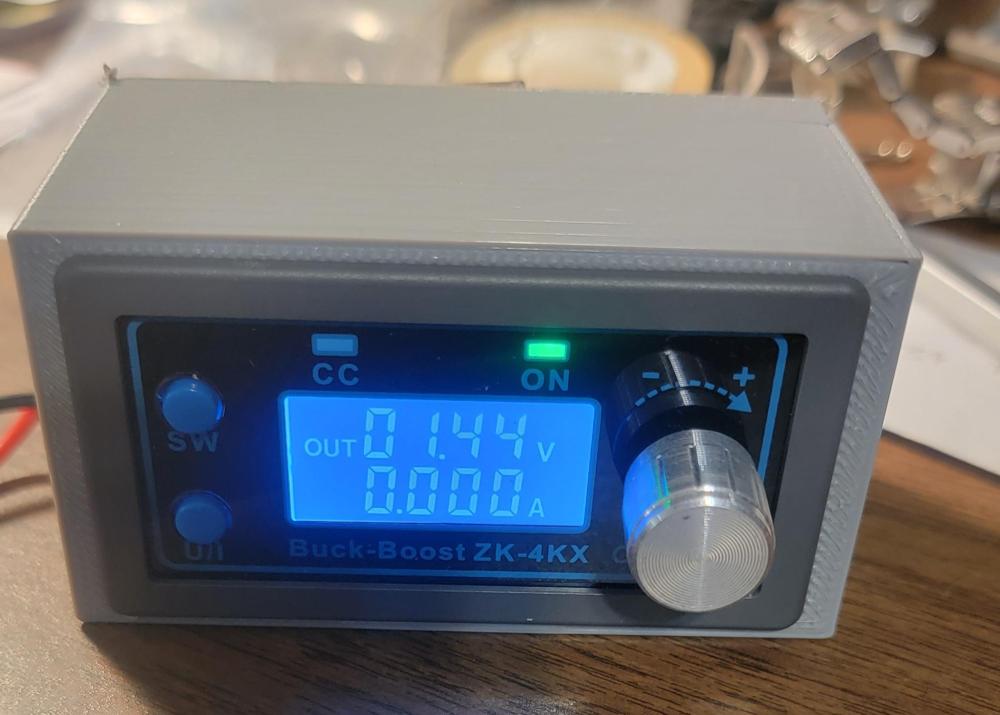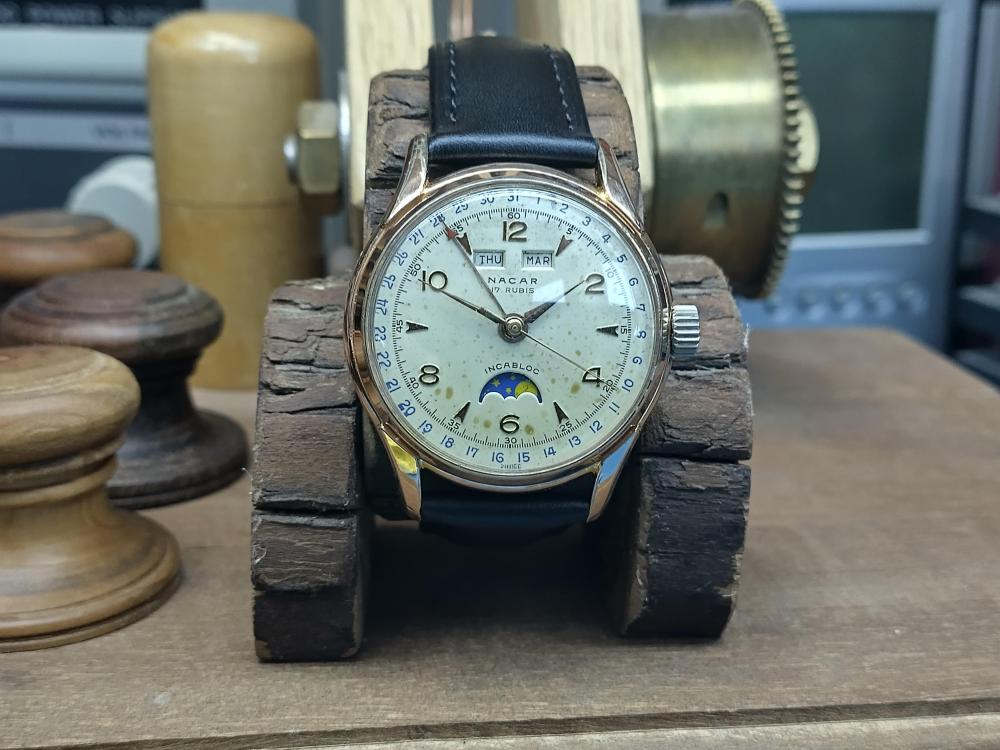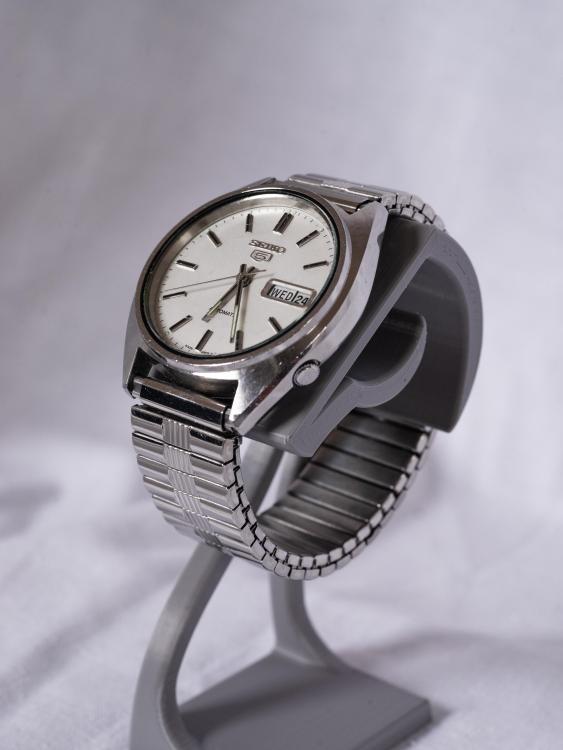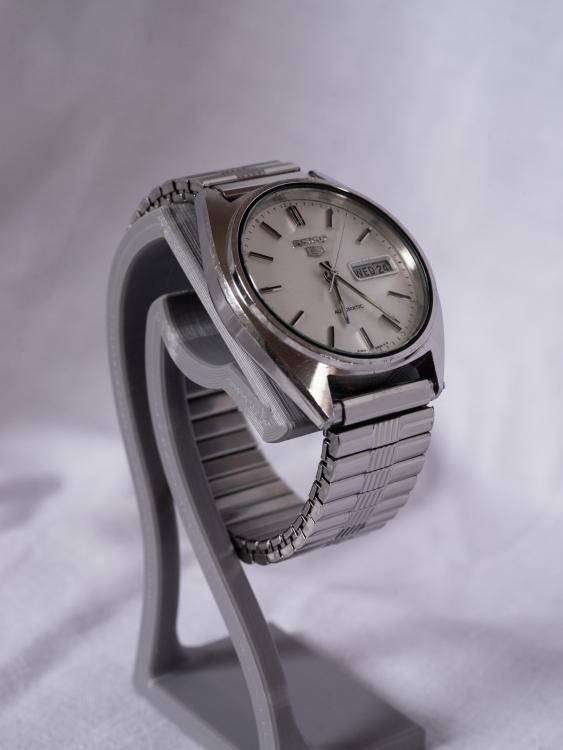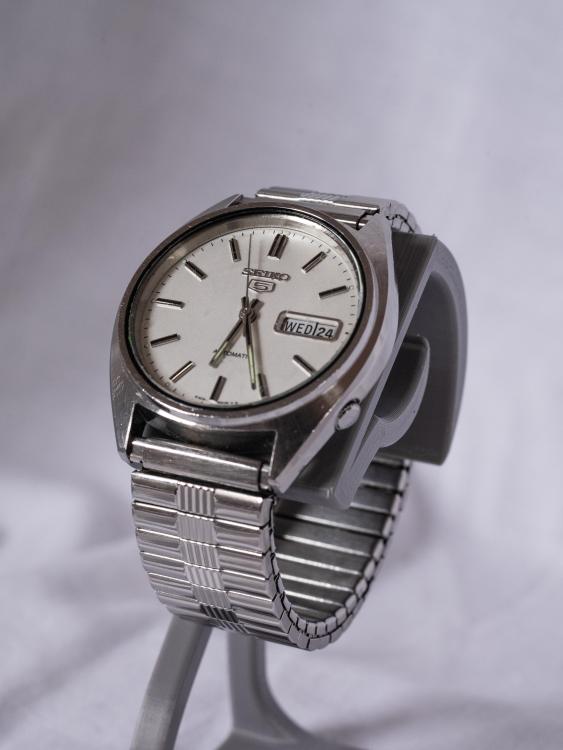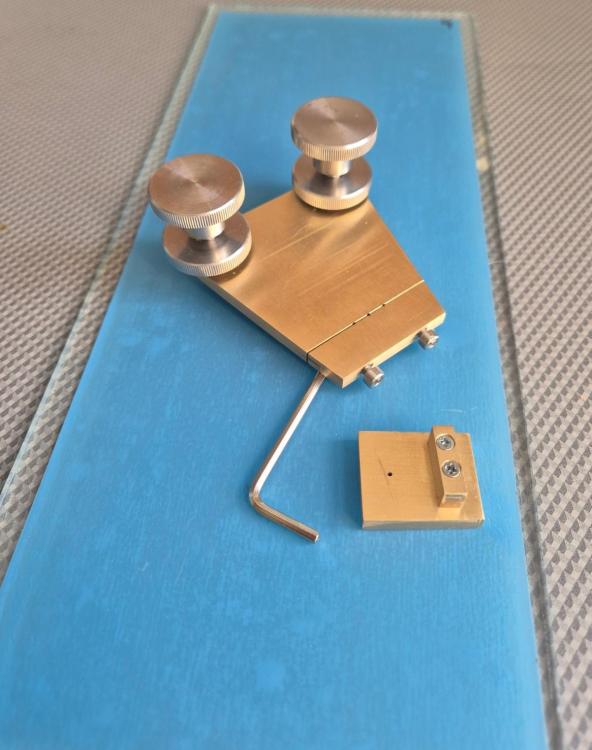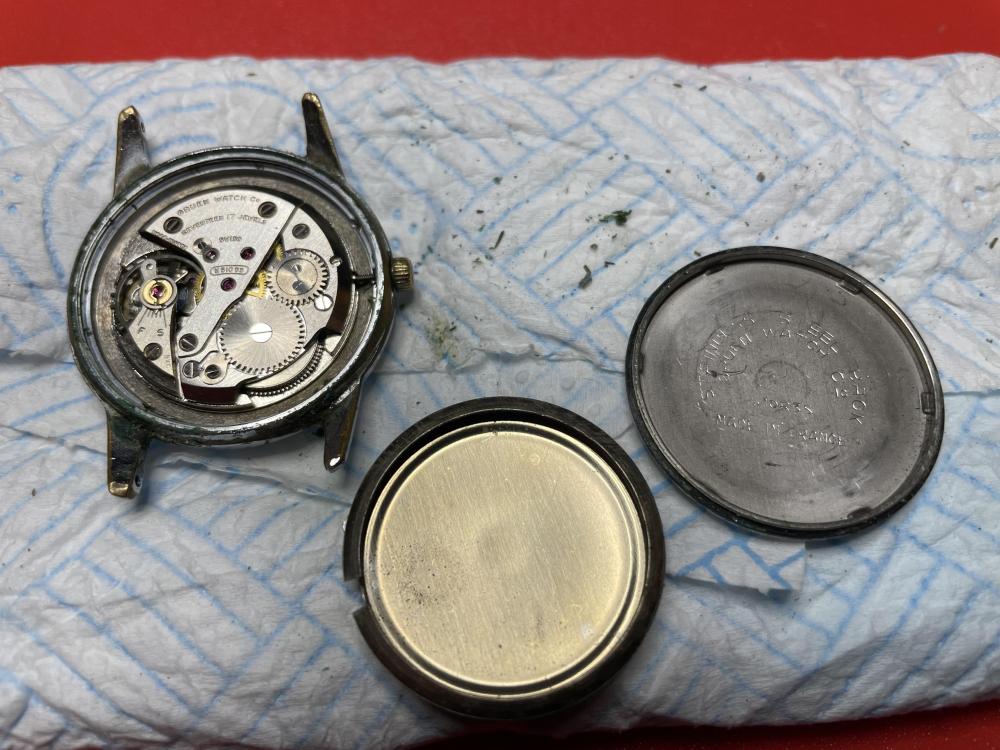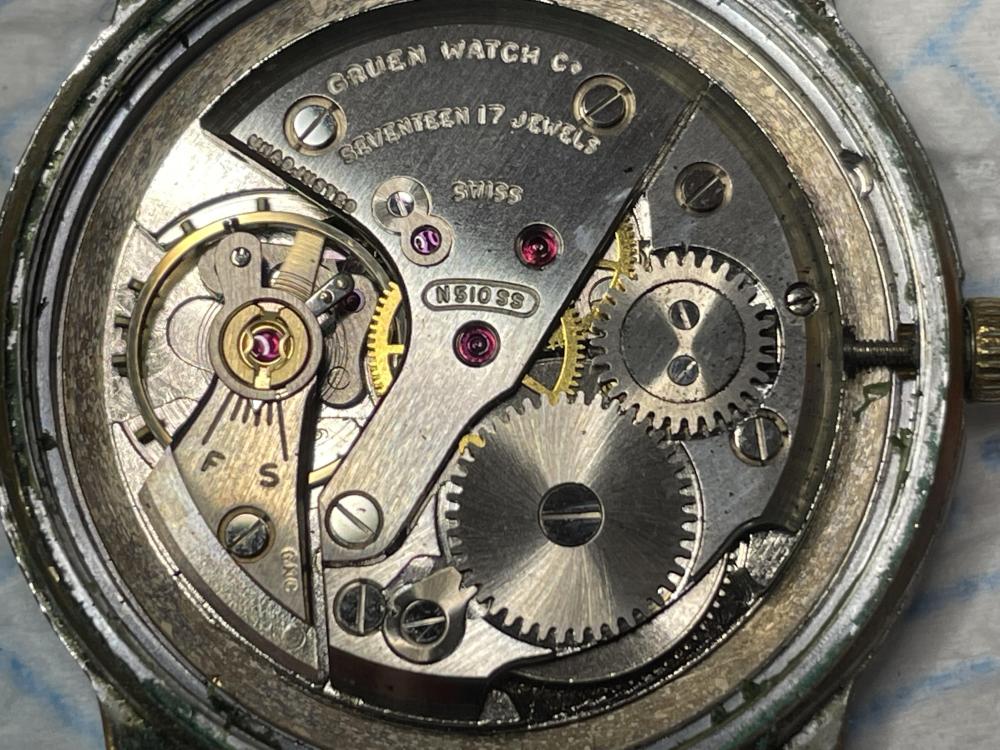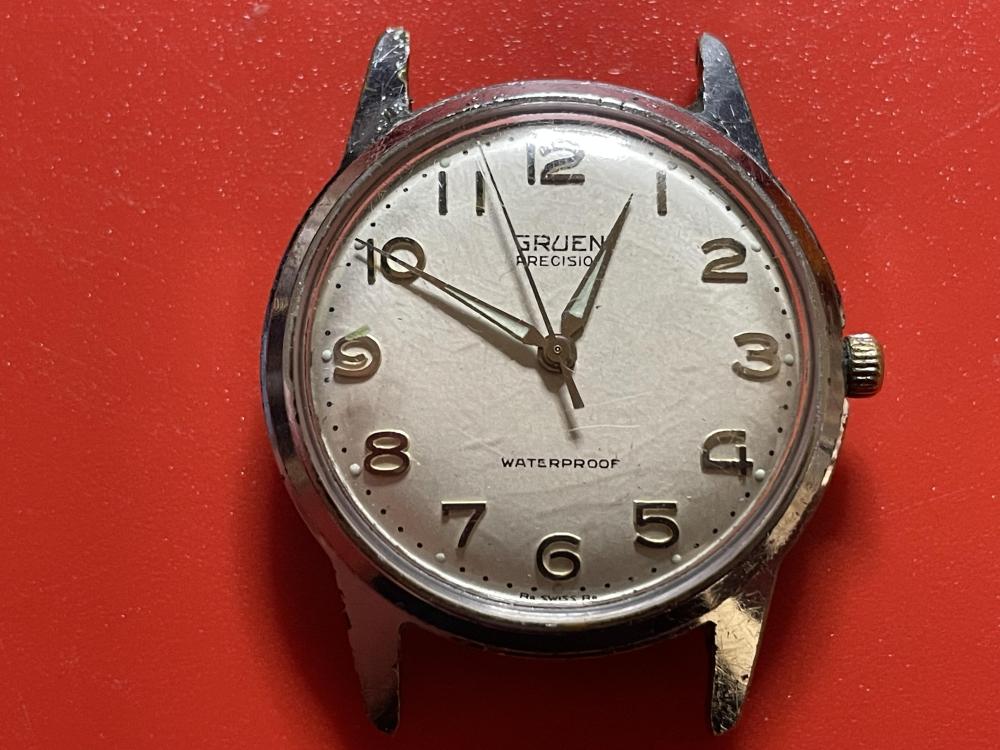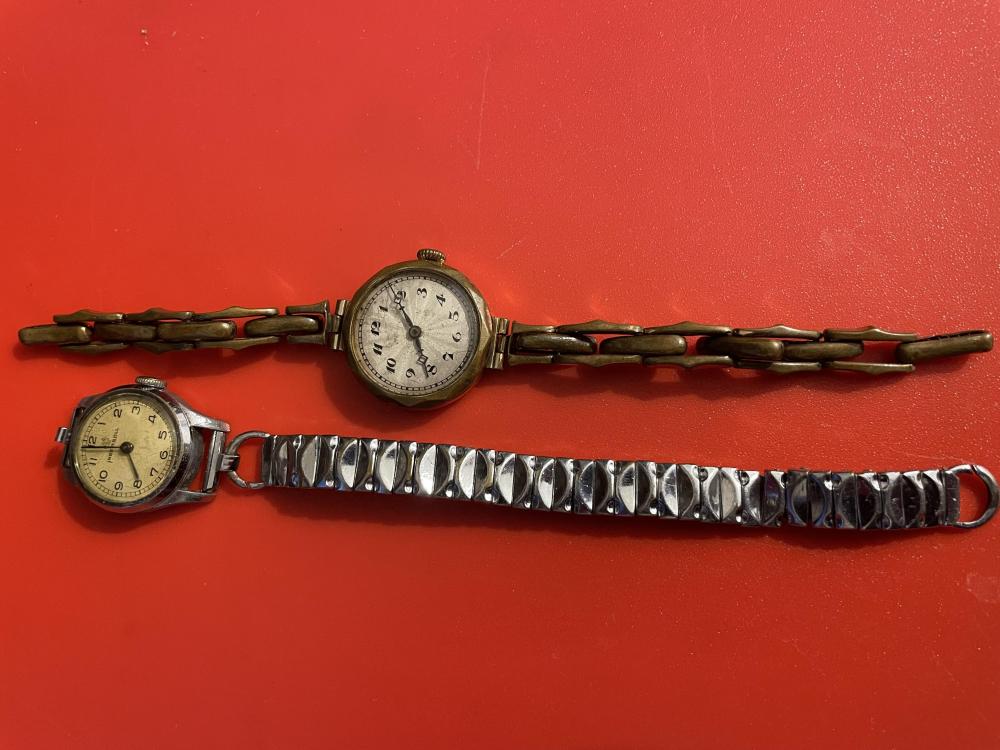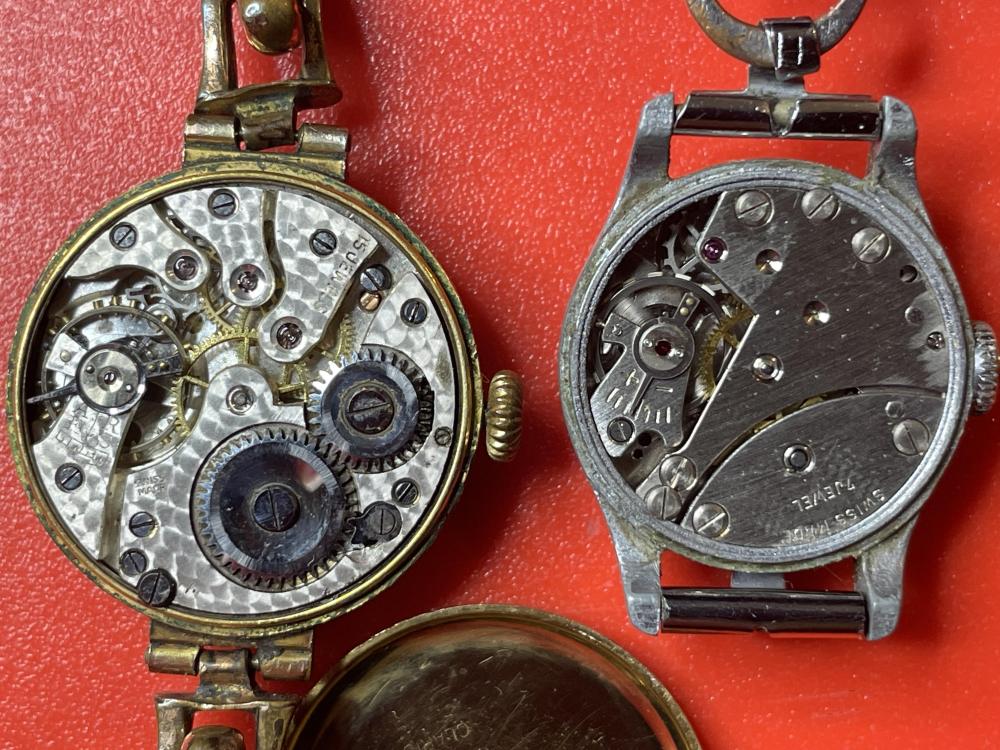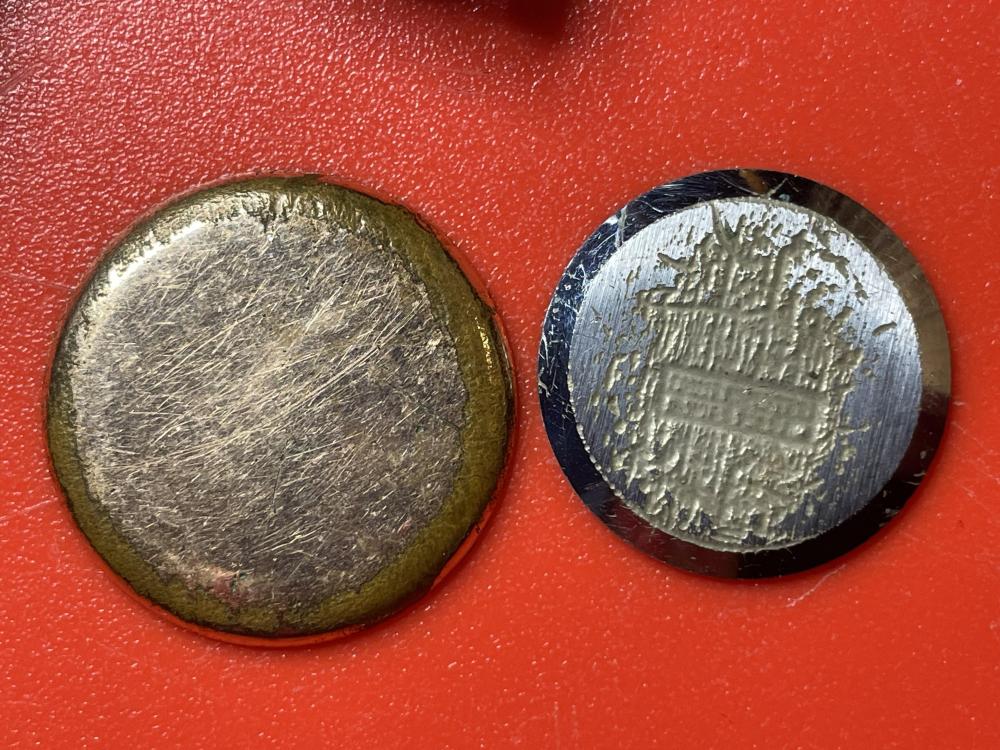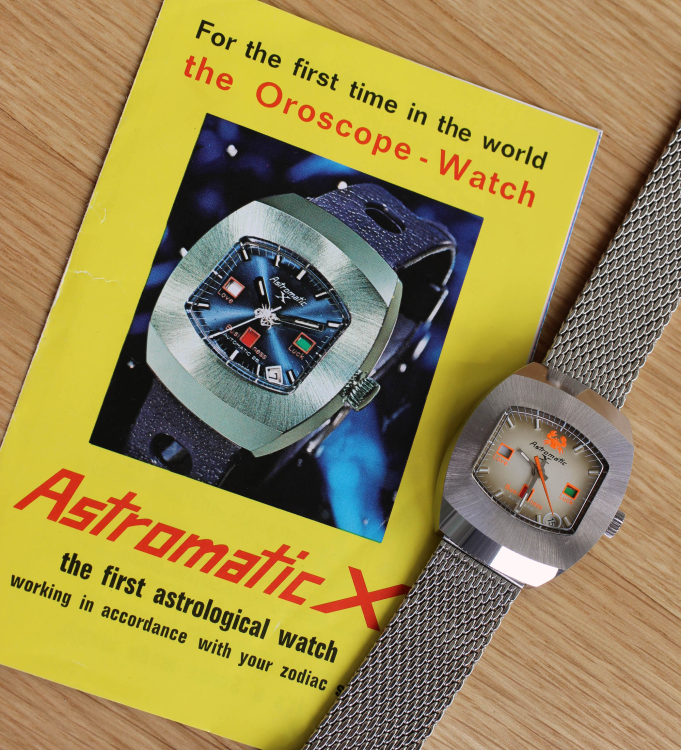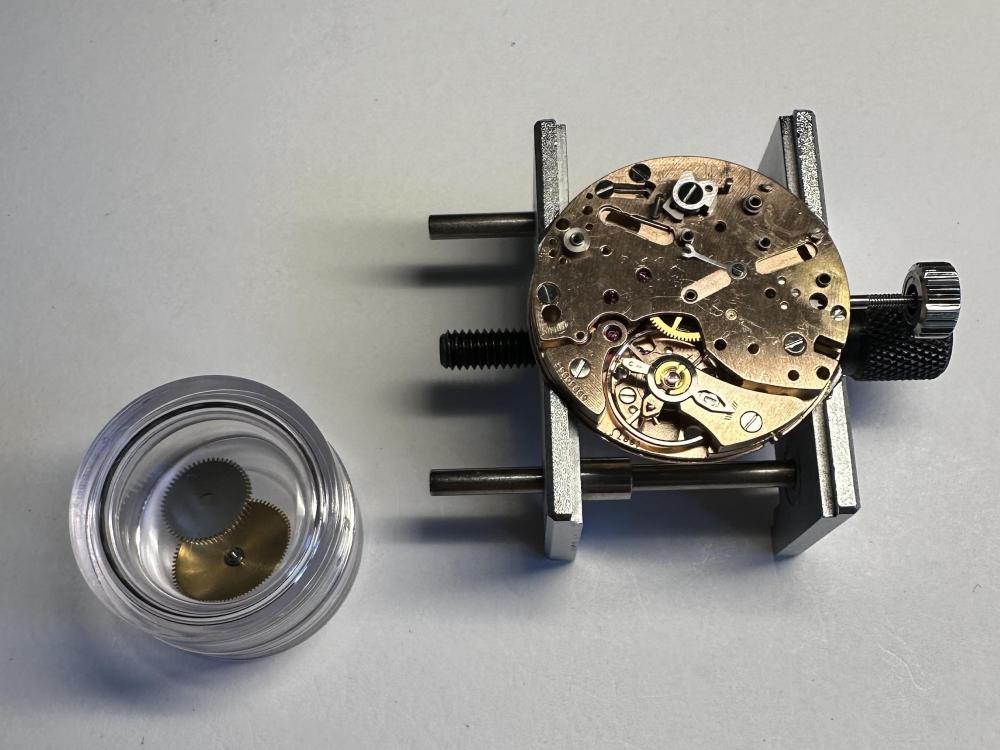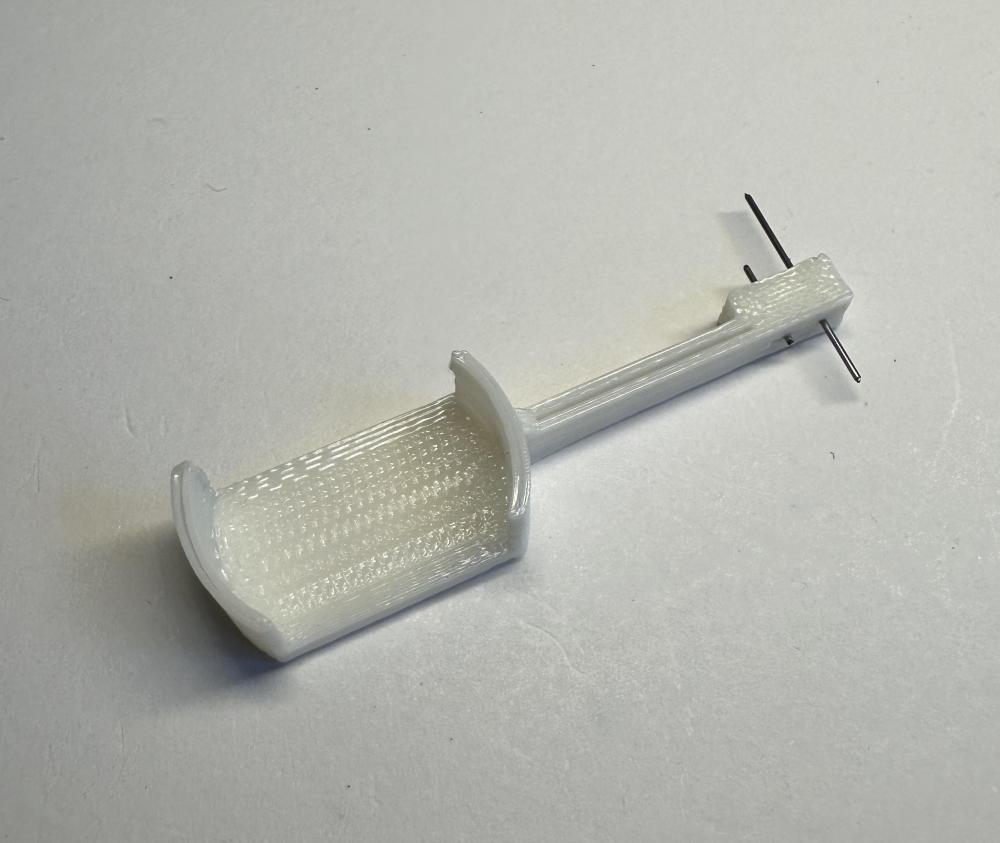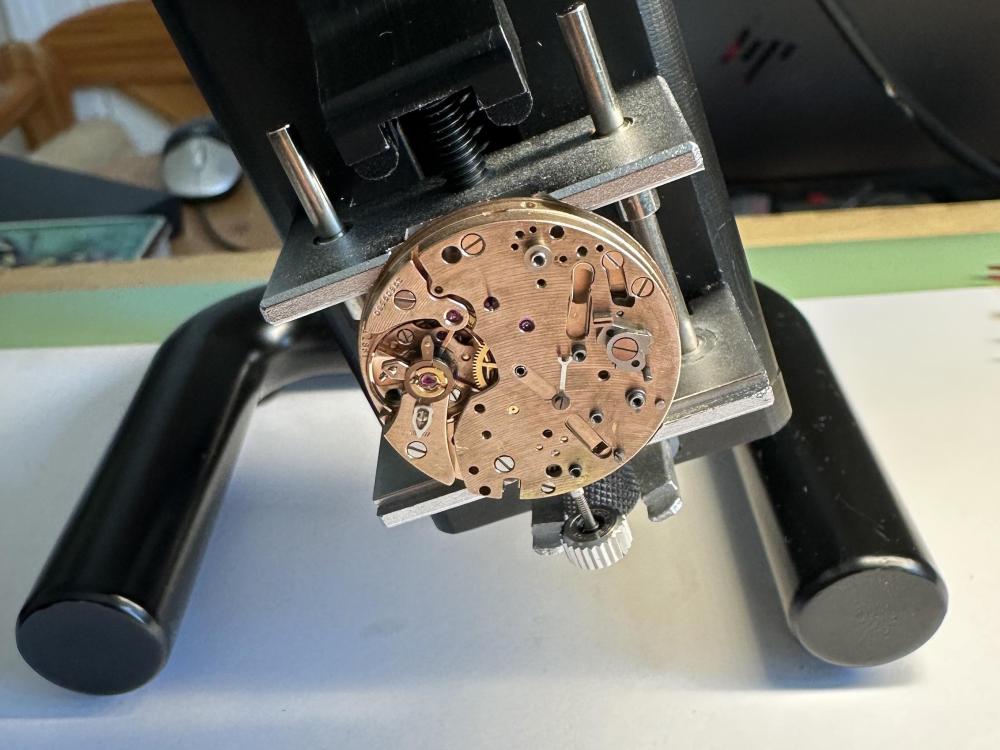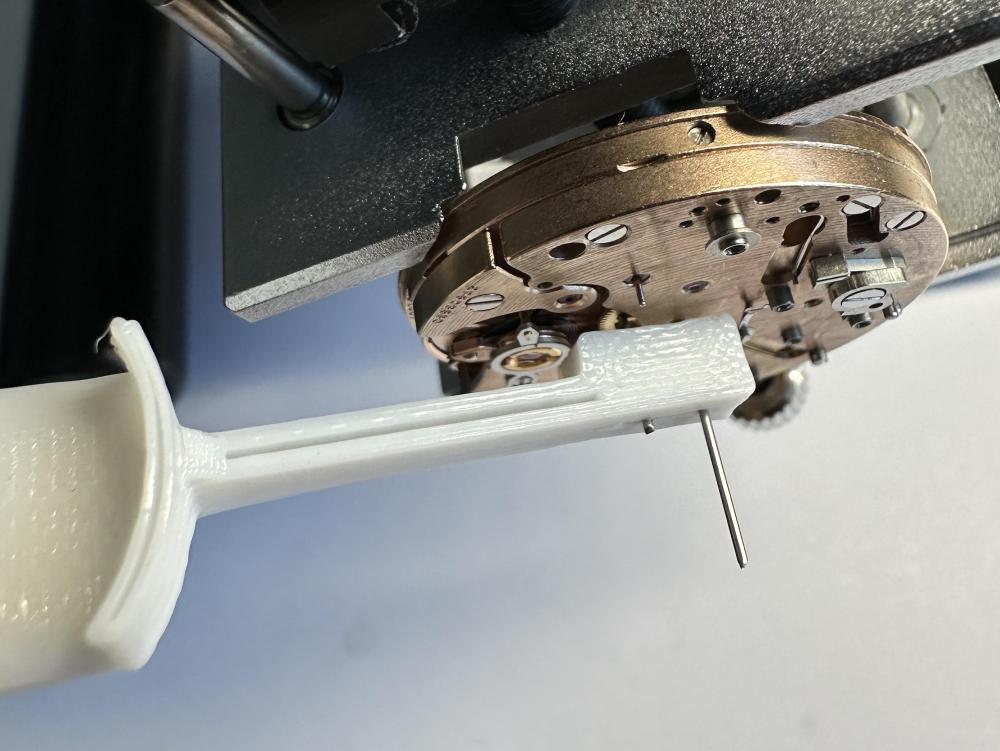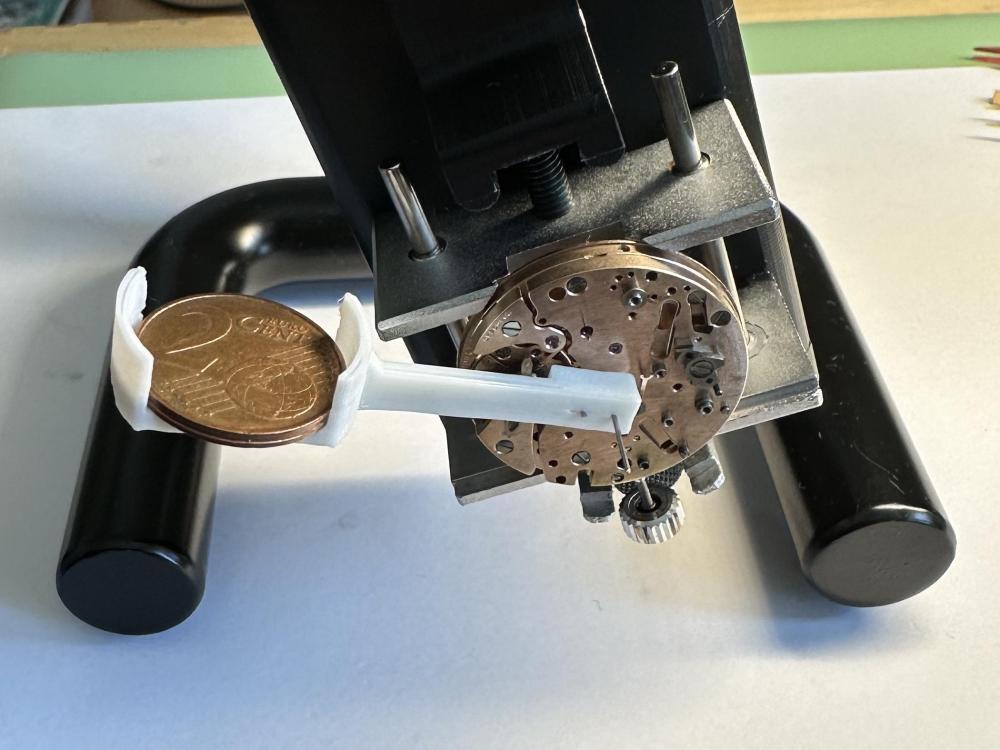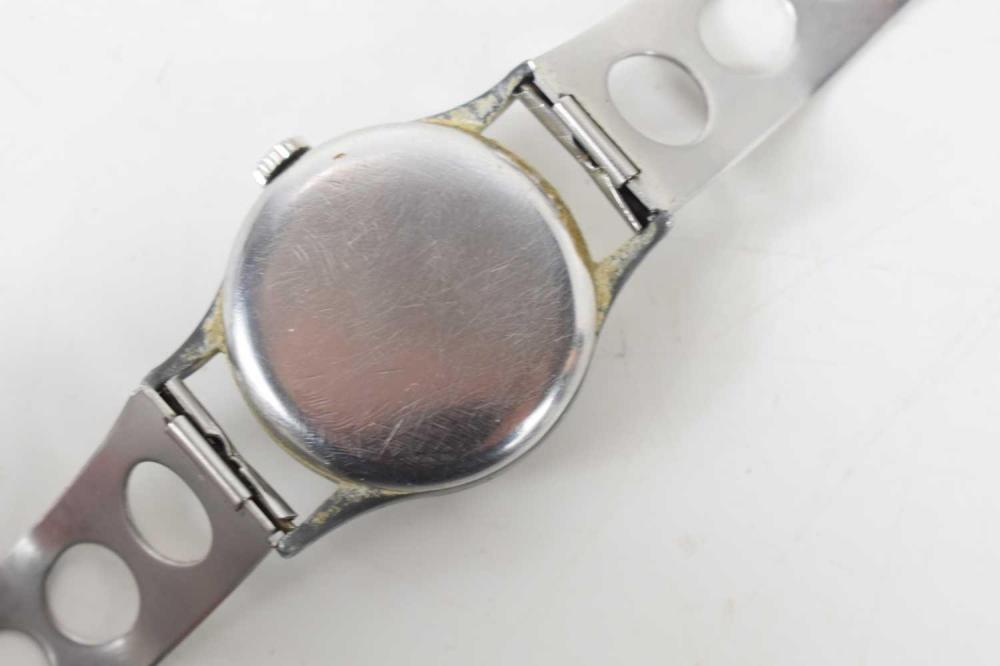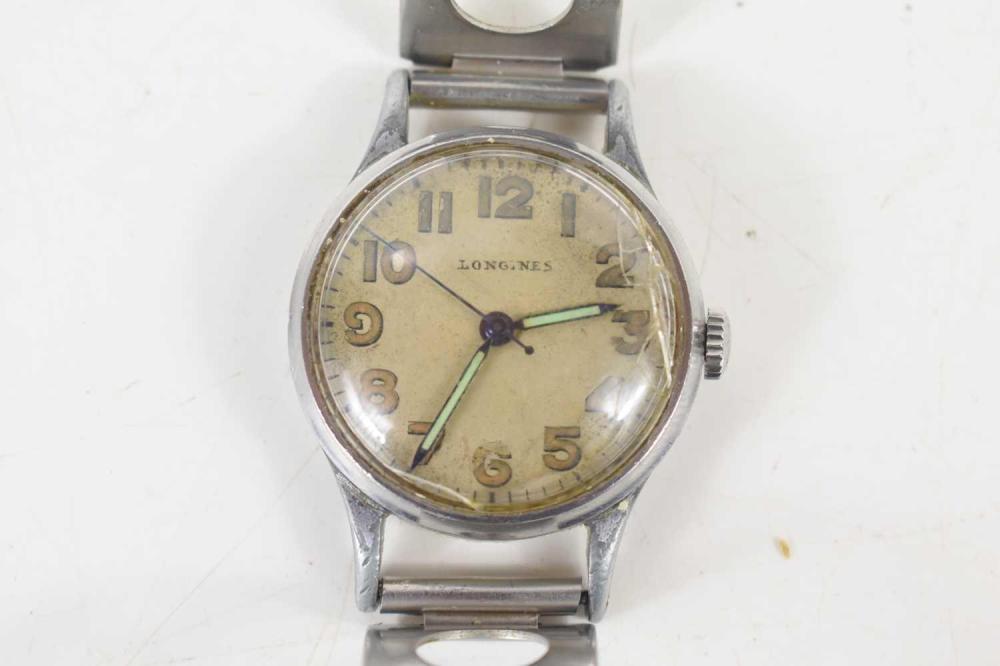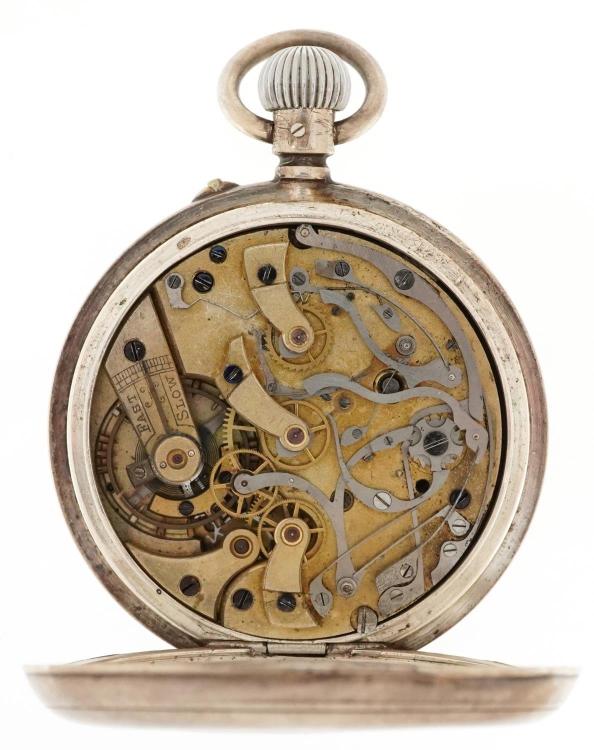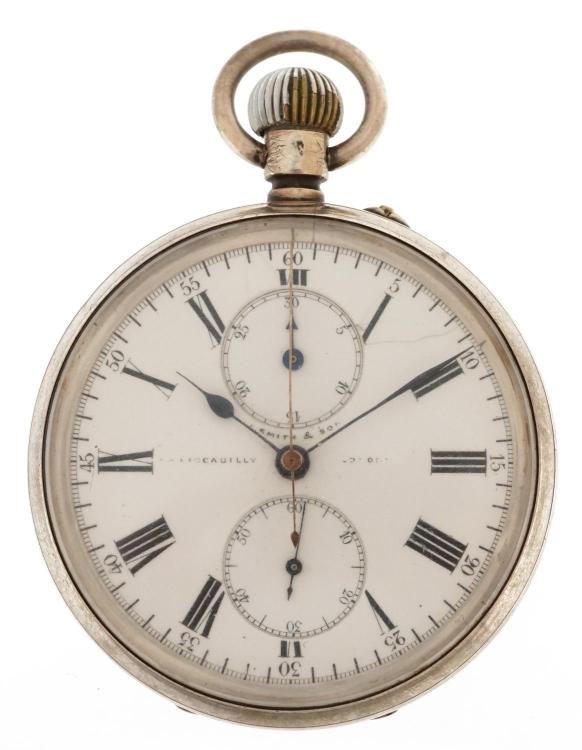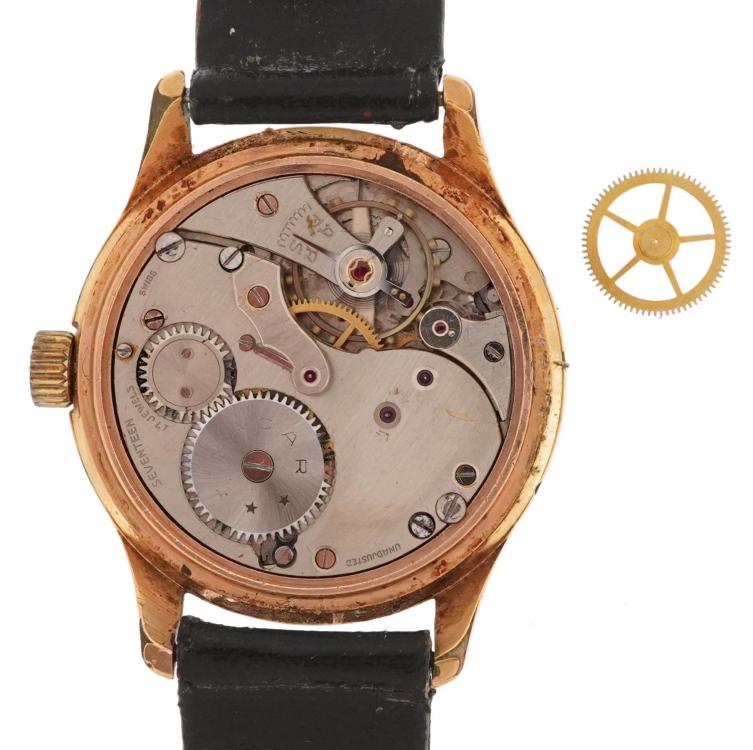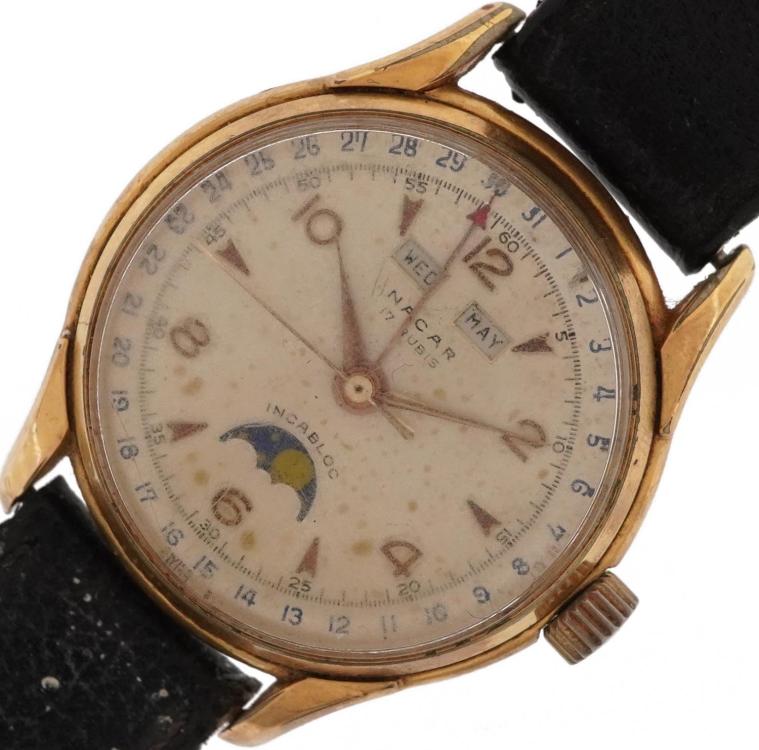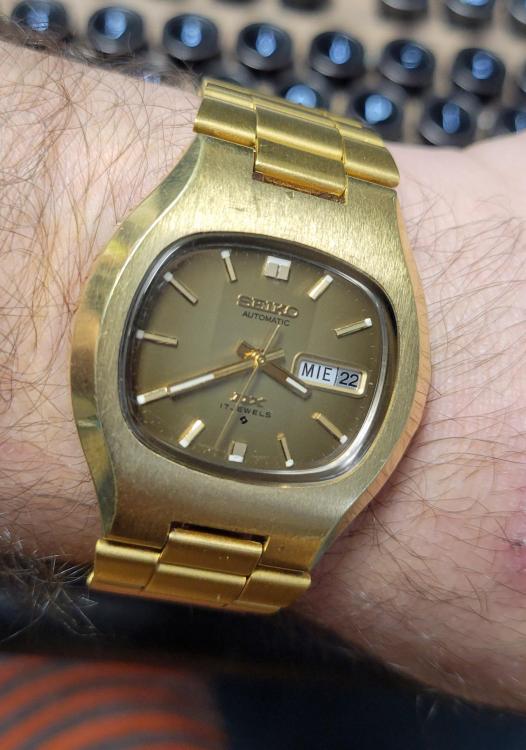Leaderboard
Popular Content
Showing content with the highest reputation since 03/26/24 in all areas
-
DIY Screw polisher. Inspired by Alex Hamilton, I have made my own screw head polisher. Less than £4 in parts. I hour to make. Chuffed. Additional photograph information Bottom nuts are tightened to make a solid base. Nuts below and above wood are to make the level set when using the polishing base. I will get a small picture frame with glass to insert the polishing paper. The screws can be altered to accommodate. I can now polish to 1 micron. I piece of wood 2" x 2 1/4". 2 x M4-30mm bolts. 6 nuts. 1 pin vice from set of 4.12 points
-
11 points
-
Hi everyone, I've been here two years now almost to the day and have loved every minute of it. During this time I've connected with folk that have suddenly disappeared leaving me sad and wondering why they left and what happened to them, its now my time to leave for a while. But first i want to thank everyone for all the help, advice and banter over the last two years I've met some incredibly kind and amazing guys. My time has become limited and precious, so watchrepair and visiting the forum is taking a backseat for the moment, although i may pop in occasionally when i have time. This is due to a personal life change regarding my 87 yr old mum who had a stroke on Sunday. My learning here is on hold while i do some teaching of my own, helping my mum to talk and communicate again . Thanks again for making my time here so enjoyable and i hope to join you all again soon. Take care and look after yourselves, make every minute of the day count, time is so precious x.10 points
-
10 points
-
I've come to the same conclusion. After breaking ANOTHER pivot whilst trying to hold a balance+cock to adjust a timing screw, I decided all watch fettling was on hold until I made one of these thingies. I've wanted one since this post started years ago, but wasn't sure I had the tools to make one. I still don't have a workshop or any workshop power tools, but the good news is I managed to lash this one together with just the following : Vice, hacksaw, files, cordless drill (), M2 tap and die, M4 tap. Oh, and a blowtorch for bending the brass. So I bought some 5mm brass bar and started hacking. Without workshop power tools I had to improvise the hinge (I just bought a small brass hinge) and the front legs (just M4 screws). I couldn't have done it without @nickelsilver's plan and pictures. Thanks It's not perfect, but I just tried it on a balance to change a timing screw, and it works. It's great. I recommend everyone should have one. So buy some brass and start hacking. I can provide guidance if anyone needs it (but my metal working skills are pretty limited).10 points
-
Its 4 o'clock in the morning here in the Uk, i cant sleep, i dont sleep, not much ever really. My brain never shuts off to rest, I'm just a constant thinker, i have to be very tired to be able to sleep, i guess eventually it will be my undoing and my health will suffer because of it I'm sure. But while I'm here i want to get as much out of life as i can, and give as much as i can, to help,maybe to make a difference to someone's life if that is within my capability,recent events have made that need even more clear to me. I'm not sure where I'm going with this or why i bring it up , or if its relevant to want i want to talk about its just in my head right now. What i do want to talk about is something thats been on my mind for ages. I like to be prepared, I'm not fond of surprises because surprises take control away and i am a bit of a control freak at times. This forum, Our Forum if i can call it that, is here because of two reasons. The guy that created it and keeps it funded and the people that joined it. Without either, it would not exist, and lets face it one day it won't ( I'm a realist and i talk about things others dont or who are afraid to in other words folk that dont particularly prepare for the inevitable). How many of us visit here regularly ? How many among us almost depend on the forum as a way of socialising because they are stuck at home and how many of us has it become part of a daily routine to check in and see if they can offer advice or get help with something they are working on or just to have a chat and engage in some banter. The members here are in the thousands and thousands have disappeared over the years many had just a fleeting visit. But there are a good few of us that know each other quite well and visit regularly. I dont know about you but i wouldnt want to lose that communication with you all, in all honesty it has become an important part of that side of my life and helps to feed my passion for all things watches. Some of you may think differently and thats ok, some of may stop and think # what would i do " Without Our Forum " #7 points
-
Double Oooooo Removal tool? Dreamed of one of these. However, Kalle on Chronoglide showed everyone my system with the pegwood. Worked a treat. Felt so chuffed to be mentioned. https://www.youtube.com/watch?v=tTFrXjiyGKc 46:40 for the wheel removal. Mentions me at 50:00 and does the removal with the pegwood. Felt like my 15 minutes of fame.7 points
-
7 points
-
7 points
-
Certainly all the big high end makers haven't supplied parts in many years. Swatch will provide parts if you meet certain requirements, and for a professional those actually aren't that hard to meet (certain equipment, training etc.). Richemont forget it. For a long time Rolex would supply parts to professionals who met their requirements for training and equipment. Then those requirements became harder and harder to meet, and finally they just stopped supplying to any other than Rolex dealers (who still had to meet the requirements). But they actually put in place a service network of their own during this time that works (pretty) well. Other makers tried to cut off abrubtly and suddenly "factory" service took 2-3x or more than before. I do kind of get that they want to control the quality of service. But ultimately even they often mess up- I have seen and repaired the results (from upset customers who absolutely didn't want to send it back again, even under warranty). Geez 25 years ago Patek would sell you parts! Not long ago I made a ratchet wheel for a fairly recent JLC perpetual calendar; customer had dealt with JLC before and waited like a year or more just for the watch to go back again, wait again. They were happy to find someone who would/could do it. But it's nerve racking work: if any part is lost or damaged, which can happen any time to anyone, woo-boy. Mechanical parts I can make, haha, but a scratch on the dial or something is another story. It actually makes more sense for car makers to restrict at least some of the parts- I was a mechanic as a very young man before watchmaking, and I've seen stuff on brakes, suspension, etc. that were definitely from a shade-tree mechanic and a definite safety issue. But you can get whatever you want and do the work however you want on your _____ car.7 points
-
Heres my watch of today, a Smith 13'" RY . My missus bought me this for this Valentines day a bargain 14.99 with a reduction, the seller has occasional 20% off offers now and then so it was about 15ish with delivery. I love Smiths and i love bulleye dials, this is my first one. The watch arrived non working as stated and i knew what was inside and what would be against me, but i enjoy a challenge, we dont expect a lot if anything from pin pallet movements. A balance pivot was broken and i didnt have another staff but i did have another RY with a battered dial so i robbed the balance and tweaked it around to make it work apart from that mostly just a good clean and relubrication. Keyless works are pretty rough by design and the crown is a bugger to get in and out with the dial on, the setting lever hits the dial before it releases it, so a little mod is needed to help that along. Major problem was the pins on the lever were quite worn which make the old tg have a snow storm fit. Its a similar read for most pin pallets, these were brass as was the escape wheel. But perseverance is me, i didn't change the pins but i did spend some time dressing and polishing the worn areas which improved the trace a lot with some straightish lines and a beat error of .5 . Not sure what the lift angle should be on these and i Wasn't in the mood to work it out and who believes timegraphers anyway, but at the default 52° it runs with 260ish full 210 after 24 hours dial down , the verticals rates were pretty much all over place. So lets just put it in it's superlight aluminium case and see what happens. Been wearing it now for 3 weeks and it's consistently losing around 1.5 minutes a week winding each morning i think pretty good for an old pin pallet watch. I just love this dial, thanks wifey heres my Valentine's gift for yer sweetie x7 points
-
This video demonstrates how to hold a burnisher comfortably, safely, and efficiently for burnishing a wheel pivot in a Jacot tool—a huge thank you to @nickelsilver, who generously shared this information. I can’t thank you enough! https://www.watchrepairtalk.com/topic/28602-longines-balance-staff-pivots-are-they-too-flat/page/2/#comment-2418877 points
-
All Done, Here are the finished pictures: This one shows the generic "one-size-fits-all" base which accepts the bespoke rings - notice that the parametric movement OD (27.40 mm) automatically prints on the ring From another angle: Here is the ring about to go into the base: And finally the base and ring together: Here it is next to a pen for scale: On my system with 20% fill each ring will take about 18 mins to print, but I am sure this could be optimised: Here is the screenshot of the spreadsheet in FreeCAD, you just need to change one value to create the ring in cell C3, (the base doesn't need any changes). I just uploaded the files to printables link here, but also include here as a fake pdf, please change the .pdf to .zip to make the file work once downloaded: Modular Movement Holder.pdf Any feedback welcome! I'm also going to make a parametric ring insert for rectangular/oval movements - but I just finished a parent teacher evening so too tired now6 points
-
This forum is a big part of my life. When I retired from horology many years ago due to poor health I missed what I had trained for. On here I can still do my bit in helping and advising others and have a little fun as well.6 points
-
Like losing Ranfft. That was a wake up call. We took his website for granted. Miss him terribly.6 points
-
6 points
-
Casio MDV106G-1AV Gold DURO200 I'm going on a long family vacation to Southeast Asia this summer and wanted a cheap but reliable beater in case I lose it, break it, or get robbed. Quartz movements aren't my thing, but I'm not dogmatic and this was a cheap option. A few years ago you could buy it for under $50, but since this particular model with the Marlin fish has been discontinued, you have to pay about double that, but I still thought it was acceptable. Sure, I could wear one of my cheap and very reliable Vostok Amphibian divers watches, but I have a personal relationship with them (having put a lot of work into them) and don't want to risk losing them. Strangely, I feel very excited. Maybe because I haven't bought a brand-new watch in over 10 years! The only downside is that this is the watch Bill Gates has been seen wearing, and I'm not exactly a fanboy of Bill Gates. Anyway, who cares!?6 points
-
Well, the first attempt was a wash because I bought 22nF capacitors instead of 220nF. So after a second order, I soldered everything onto my SMD breadbaord. I de-soldered the electronics from a 218 movement that I had previous tested and hooked my little circuit up in its place, and hooked the whole thing up to 1.4v from my power supply. ...and realized I'd gotten the pinout of the transistor wrong. After I removed and re-soldered it in the correct orientation, I realized I had the connections to the coils backwards. Once I fixed that, THE FORK STARTED VIBRATING! I could not have been more excited!!! If you haven't guessed, my somewhat evil plan is to make a surface-mount PCB replacement for the resistor, capacitor, and transistor in the 218s. Why? Because why not? The transistor is in a SOT-523 package, the resistors and capacitor are 0402 (1005 metric) packages. I have to redo the circuit to get the transistor pinout correct, but here's what I have in mind:6 points
-
6 points
-
It would be nice if Sellita stood up to the block and advertised their products as hard as swatch. We all know what brands use the swatch movements but it’s not that commonly known which watches use SELLITA movements, that way the public could avoid the SWATCH brands, The parts availability and service data being good points to put forward. I have when asked for advice on a watch purchase told the customer to avoid the Swatch brands because of the high cost off parts and servicing in-house. I think they ,SWATCH are trading on the known names which in the past were quality pieces and people were used to them and therefore bought them on that basis only to find out later when requiring a service it was out of their reach and the watch was deposited in a drawer lo languish un loved and un used for many a year6 points
-
people be honest.... Swatch is evil for the watchmakers and repairers, BUT not everything in watches from Switzerland is from the Swatch-Group. As far as i know, Selitta got sacked by Swatch as a Movement-Assembler for them and they started to produce Movements in their own Name with slight Modifications. As far as i know, they sell Parts to the Market for their Movements. In most cases, if a ETA-Movement fails, it is a valid Option to replace it with a Selitta Movement, which i consider the Solution for this Mess with the Swatch-Group...... I have no Connection to anybody at Selitta, but being a Swiss-Guy, i still like to have Swiss-Made Watches, but not from the Swatch-Group. ok ? regards, Ernst6 points
-
6 points
-
Getting back to the issue which is us guys repairing or just enjoying horological exploits. The big worry now is how sound is Cousins as company going forward. The of cost if this 8 year legal battle will be astronomical. Cut backs will happen noticed already how the Cousins catalogue is half its size this year. The main supplier going out of business will hit the UK horological community in a big way. On the Brexit issue it was about a sovereign country being able to make its own laws and trade with any country in the world. I cannot see what was wrong with this. For those who wish to re join the cost would be very high indeed.6 points
-
Hello everybody, sorry for the late reply. Thank you all so much for your help and your tips. I got lucky and found a replacement wheel bridge for cheap which actually ended up being in decent condition. I decided not to do anything about the mainspring barrel pivot since I didn't have the right tools and the barrel didn't have much endshake anyhow. I am happy to report that the watch now runs great, I have regulated it to about +-10/s day which is fine by my standards. The timegrapher result looks decent as well, although beat error is around 0.6ms which could be better I suppose. Amplitude reaches over 230 quite consistently which I'm happy with also. My lighter fluid has also been replaced by balance spring cleaning solution and now the springs don't stick to themselves anymore - who would have thought. I'm super happy with this watch, it might not be worth a whole lot but it's awesome that I could restore it and it makes me wear it with pride. To me it's a genuinely good lucking watch, it'll be my daily driver for a while. Thanks again to everybody for their input! I couldn't have done the repair without your help. Here are some images for those interested, the bracelet isn't original but I don't really mind:5 points
-
Hi guys, I wrote a set of five lessons for my second year students regarding the Landeron 248 chronograph watch, which incidentally we are meeting tonight. They are going to be polishing pivots and pinion leaves of their 248s, before putting the movements through the cleaning machines. This is number one of five. I posted number two of five the other day HERE There are seven eccentric studs on this movement, so understanding what the studs do, how to set them, their actions and interactions with other parts of the chronograph mechanism is vitally important. I found there is very little out there on the internet to help understand the principles of these eccentric studs, especially video content to show various faults and alleviations, so I put together quite detailed walkthroughs of various complicated movements usually consisting of 15 to 18 hours of learning/servicing in the workshop per movement/module With any watchmaking, especially with complicated work, only make one adjustment and measure the results, if any. Be methodical in your approach. The lesson was originally in PowerPoint and I had to convert it to PDF to post here, so a lot of the video content won't play, but the PowerPoint version is in my cloud storage here. https://docs.google.com/presentation/d/10KJJ58P0v2BglKZSilIv9o69xBsbrQPI/edit?usp=sharing&ouid=107902587627140904870&rtpof=true&sd=true You'll need quite a newer version of Microsoft Office (PowerPoint) so the video content will play, otherwise it won't. I hope you find this lesson useful and begin to get a better understanding of how to set eccentric studs. Sometimes you'll come across a stud that is too loose, or even too tight. Usually if one is problematic it will be because it is loose. This can't be left, as the stud will turn whilst the chronograph is stopped, started and reset, throwing the chrono mechanism setting off which could lead to the movement grinding to a halt. Don't fool yourself in thinking it will hold. Either a replacement stud is fabricated to suit the enlarged hole, or the hole can be closed up. In turning and setting the eccentric studs prior to disassembly of the movement, we are able to set the chronograph mechanism, especially the minute register mechanism correctly and test for any faults, such as a bent wheel over fourth arbor, or incorrect depth of the dart tooth with the sliding gear, or a mis-set minute runner jumper spring, to name a few possible faults and mis-settings. Also in turning these eccentric studs we can gain a 'feel' for how tight they are in the mainplate or bridge. The more they are turned the more the chance of the stud becoming looser increases. So once set correctly prior to cleaning, the less chance they will need setting once the chrono mechanism is assembled, only if a stud isn't tight enough in its setting in the first place. This is for setting Landeron 248 eccentric studs, but once an understanding of their uses and actions is gained through theoretical aspects together with practical application, then this skill and knowledge can be used in most vintage chronographs to set their eccentric studs and even in modern timepieces where you'll find very few eccentric studs, such as an Omega Speedmaster or Tag Heuer Calibre 01 chronographs Enjoy! Lesson 22. Landeron 248 Chronograph.pdf5 points
-
Never and others. Yes, like you I do spend a fair amount of time reading the contents of this forum. I find it better that any other. Clear, lucid, no Prima Donas, and most of all an easy access without adverts. All thanks to Mark. God bless you mate. You give so much to many of us. What if? No Mark? Hypothetically. A forum. I did run a forum for a few years. Really enjoyed it, but became so engrossed that it did affect my health. I gave to to others to run. Not been back. It was very successful and rivalled a number of large paying sites. No adverts, no others but me. I did ask and listen to members comments and it worked well. Costs Having a domain name, £10 annually. Register the site with a forum company, free. Build the site using the forum company guide lines, free. It looked and ran almost the same a Mark's. All the same facilities. The cost was only £5 per month, but counted visits (views). If I recall, it was that price for 5,000 views. Each extra 5,000 views increased the price by £2 per month. Success was my own personal undoing. From £5 per month initially, it rose to £60 a month and looked like increasing. This was 10 years ago. I could not afford that, and asked it anyone would like to take over and someone did. I would assume that this is the price that Mark is funding for us all. His return is our continued comments on the internet about his course, and the fact that many of the big names on YouTube mention him as their Tutor. Those of us who have done, and are still using, his course, benefit. In comparison to other courses, I can't believe how cheap it is, and the value is exceptional. It is the structure that gives the value. Long may Mark reign. Ross5 points
-
Hi guys, the question is what is a forum, a place for discussion and passing on information, idle chat and a bit of fun and I for one are the richer for it. When in Hospital last year with the Covid being force fed oxygen and feeling total sh1t and close to the pearly gates a daily look on the forum to see what was going down helped to keep me focused on the job in hand took my mind off the problem for a short while but it was a lifeline for sure. We chat to friends for that is what they become around the world read their posts help where we can post information where we can. I like @Neverenoughwatches some times think of members past and wonder if they are still at the watches or given up, some drop in for advise and drop out again never to be heard of again. The forum reminds me of Yorkshire hospitality, The door is always open and the kettle on the stove. Long may it continue. My two bobs worth.5 points
-
I finished my polisher yesterday, and just tried it out. I'm surprised how easy it is to get a good result - just a couple of minutes. I thought it was going to be more difficult - a nice surprise as most things in watchmaking are harder than you expect. I bought self adhesive 3M lapping film https://www.cousinsuk.com/product/film-lapping-3m-261x266x , 9, 3 and 1 micron, and stuck it to sheets of glass. The 9 micron is course enough to remove large scratches. I'm glad I used the M6 thumb screws as the large heads allow for small adjustments.5 points
-
5 points
-
I've had a quick bite to eat and would like to crack on with this if thats ok, i know its not watchstuff but its important, if even just one of you can avoid this happening to either yourself or a family member then it's 100 % worth my time and getting it out of my system really helps me as well and hopefully spurs some of you to make sure you and your family are ok. And please anyone that can add some input from knowledge or experience then just jump on. The stroke mum had is known as an Ischemic stroke of which there are more than one kind , mum's was an embolic stroke , these are caused by blood clots ( wandering clots or embolisms ) another type is a thrombotic clot that can block main arteries that may supply blood flow to the brain . From what i gather thrombotic clots are stationary, these are the type that cause pain and restrict blood flow in the particular area where they form ie. leg , chest. Mum's embolism travelled to her brain , so she had no experience of pain and no warning until it was too late. Many things play a part of clot formation, we can't change our genetics but we can edge our bets by leading a healthy lifestyle. My mum is 87 5' 1" and weighs around 55 kg, has always been extremely fit, goes out nearly every day into her village or the next town sometimes a town 40 miles away on the bus if she's buying presents. She eats healthy as far as mainstream guidance tells folk, fish chicken no red meat, fruit veg nuts etc, all the usual stuff thats considered healthy and no real crap like pastries sweets . Has never smoked and has never really drunk alcohol, but she is a stress head and worries about everybody and things she really does not need to. This is me to a tee, i worry about everyone and rarely myself. Being in hospital we've discovered she has an irregular heartbeat ( caused by the stroke ? the doctors seem to think not ) . Atrial Fibrillation, doctors have attributed the stroke cause to her irregular heartbeat, apparently clots can form in the upper chambers of the heart were irregularity occurs, brake up and become mobile to cause damage. Those are just one type of stroke, hemorrhagic stroke (less common than an ischemic stroke ) caused by a bleed in the brain generally thought of as more serious as not only is the brain being starved the bleed itself can exert pressure on the brain. Its important to know the difference which cannot be ascertained until a scan is carried out, and the treatment is different. Common thinking was to give someone experiencing a heartattack an aspirin to improve blood flow, this can actually worsen the effects of a bleed on the brain. There are lots of causes for a stroke, genetics for sure like i said, but getting the most from your genetics and nursing the weak areas by living healthily will not only extend our time but give us more quality time that we have left ( change just one thing if thats all you can manage for now ). Regular visits to see the quack will pick up warning signs early , just one visit for an mot might save not only your life but wont destroy the lives of your loved ones. Anyone here in their 50s not had an mot medical check up yet ? Er cough er maybe its time to make sure everything is working as it should, and not just your heart ( dont clench when the doc stretches on those latex gloves, and definitely dont have a smile on your face when you stand up straight again ) . A stroke can strike anyone of any age and of any lifestyle if there is something underlying going unnoticed, make that call and find out how you really are with your health. Love you people x Absolutely Richard, i cant help my mum if I'm not well myself. I have a habit of keeping going and draining my batteries too low ( maybe i need a wind up key in my back ). The Mrs cant figure out i get by with hardly any sleep or rest, calls me a robot with emotions. Thank you , very kind of you Del. Thank you rehajm Thanks OH, i know i can be a pain in the bum and have you watch over my antics but that means a lot. Thanks MSB , she'll keep kicking as long as I'm around , thank you. Thanks WW, i will make sure to do that, my time here is not done by a long chalk. Thanks Hector i take note of everything you say and completely agree, i cant do it all myself and my mum wouldn't want me to. Bit difficult to let go of the reigns though. Thanks Guy, i appreciate those comments . Thanks Nev, my mum makes it easy she is very resilient and very independent, she will get all the care she needs and wants thank you. Thanks so much , my mum and me aren't going anywhere, the forum will have to manage with a diluted version of me for a while. Thanks Steven really kind of you to say that, thank you for the times you have kept me straight, i dont forget that. Thanks Tom yep i know where you are at , very much appreciated. Thanks matey, at the rate my mum goes i won't be gone for very long. Thanks Steve i appreciate that. Thanks Ross i really appreciate that. If i helped you in any way then that makes me happy. I know we are not supposed to have favourites among family friends etc. But i think you are one of mine so just dont tell anyone Thanks Jon , there are others in my family, but i have always been the doggedly determined one that likes to get things done. Thanks Mike, thats really nice of you to say so.5 points
-
Hello forum, i have some things i would like to say today if thats ok. Being here is something of a sanctuary for me, talking about something that i love doing with folk that i have become fond of ( yes quite surprisingly under all that craziness and verbal brawn lays a soft heart of gold ). I imagine that the same can be said by many of you , a certain number of us are here daily both learning and offering any advice that we are able to. Quoting our experiences both successful and failures for others to learn from. For me at the moment just making this post is a distraction from my current bubble but also from the world around me for various reasons. Its a place not just for teaching and learning but to make others laugh and smile and be part of a community. I would even go so far as to say we are a team, supporting and encouraging each other when needed and when we are down, my own situation with my mum being a perfect example of everyone's kindness. Thats the soppy bit out of the way . So my mum has been moved to a brand new facility after making amazing progress with her speech and word recognition in hospital ( poor mum has had to suffer my company and my teaching to the full extent of her visiting hours barring one day off for me that my sister insisted upon ) her consultant calls my mum his medical miracle , and will be starting her intensive speech rehab today after her initial assessment. Things I've learned about having a stroke, and I'd really like everyone to take note of the causes and outcomes of having one. Please do your own research I am a joiner and not a doctor , i just want to make everyone aware and just get checked out if you notice anything in yourself that you are unsure about, any risk of having one can be reduced with either medical intervention or/and a change of lifestyle ( which would be my own preference in an attempt to limit my risk, something i have now noticed in myself ). I do know a few of you here have experience but this is what i have become aware of and how it has affected my mum and me. First i want to touch on the effects of a stroke, not only to the sufferer but to the whole family, we all know how dementia affects lives. A stroke effecting language is almost instant non aggressive dementia. Like being in a foreign country where you can no longer read, write or speak to someone without some form of very basic sign language gesturing ( when annoyed i think everyone understands the middle finger ). But a stroke can affect movement ( fortunately my mum is virtually unaffected with her mobility, the nurses can't believe she is 87 and just had a stroke, she's like bloody Supergran, in fact she is a great great grandmother to 2 toddlers ) . Improvement after a stroke carries on for years afterwards, but from what i understand and now believe after being with my mum almost every day since it happened for 7 hours a day, language rehab should be started as soon as possible when the patient is out of danger and physically able. The brain is ready and set to go and rewire itself soon after injury, in a similar ready state to young children ( when we say kids brains absorb information like a sponge, thats pretty much true in early stroke patients) After the first few weeks maybe a couple of months things start to slow down and lesser progression carries on for the years following . After a day she could manage only one word, which was my cue to get on her back and start pushing her progress. Day two i wanted to see how capable she was so i had her writing on a whiteboard ( it wasn't great tbh ) . Day 3 and until she left the hospital most time with her was spent on picture/word recognition on my laptop, picture books, some writing and teaching her to play cards again ( i refrained from gambling for real money, though i was tempted, as I'm pretty good at poker , she has a few bob and i have space for another watchmakers lathe in my watchroom ) Now i suppose i have to back off as the rehab place is fairly intense focused and visiting times are crap as they interfere with all the physio and rehab going on . So i only have 2 hours max a day with her sometimes only 1 if her grandkids want to visit, but she is in good hands and i know she will get as much help as she needs , and as difficult as it is to admit i probably need a bit of a break and distract myself. I'll end this post for now but i want to come back and talk about what caused this and hopefully remind some of you to think about how we live , what to do in the event of a stroke and how we can lower our risk. I'm not a pussy by any means and very little frightens me, but seeing this first hand has put the fear of god into me if i ever had to suffer the outcome of a stroke. My mum is a tough old cookie and i imagine i will be just as tough, but watching the frustration on her face when trying to communicate completely tore my heart into pieces. Please dont let this happen to you, do everything you can to avoid it, I'll come back soon to talk more about as long as everyone is ok with it, take care for now x5 points
-
Hi @Neverenoughwatches, I will keep you and your Mum in my prayers. A caregiver's job is a tough one. I have known nice little old ladies to undergo drastic changes in their demeanor after suffering a stroke. Patience and understanding is essential in all circumstances. Never lose your cool or be condescending. Try and enroll in a caregivers training course. It really helps. You cannot take on the role of a caregiver 24/7. You need to get a relief caregiver. You need to take care of yourself before you can take care of others. Do not be afraid to ask for help. Hope to hear from you soon.5 points
-
What I consider ebay "Paydirt" - taking the back off a watch and finding years worth of accumulation of crud around the edges, so it is as previously worn rather than someone else's failure or Frankenstein attempt they are getting shut of. And even better when you also find an immaculate movement with no sign of rust or chewed up screws! Another couple I think are fantastic old ones, from an ebay job lot (under £2 each). They both look like they have been worn to death, with little plating left. The "Claridge" one (upper) has the date 1922 (or 23) scratched in the back, and the Ingersoll has 2/48/FW in the back. (Is that when it was sold, or serviced)? The movement in the Claridge looks like it was a reasonably high end one at the time, from the finish? It's also got quite a fancy dial. That one tries to run, but is very sticky. The Ingersoll is only a pin escapement type, but it's still going strong with good amplitude!5 points
-
I have a different view to the DD module world. I began watchmaking for one main reason: To understand and enjoy complicated mechanisms. So when I already had some years of experience with several ETAs, PUWs, Rolex I entered the chronograph business step by step. Landeron 248, Valjoux 7734, Valjoux 72, Buren 12. And while working on the last one I came across a picture of the DD2020 without cover plate and had only one thought: Wow! Freaky! How the hell does this thing work? So I bought a Omega Speedmaster Reduced just for the sake of disassembling, reassembling and understand that thing. I wrote a little article on the r-l-x-forum about this (not a service-walkthrough as this is not a watchmaker-forum, but just a description how it works): https://www.r-l-x.de/forum/showthread.php/197912-Konstrukteure-auf-Speed-–-das-Omega-1140-mit-Dubois-Depraz-Chrono-Modul There is a lot of information on the internet which guided me, especially Marks videos about his Breitling for Bentley service and the Omega 1140 tech sheet availiable on watchguy UK: https://watchguy.co.uk/cgi-bin/files?showfile=Omega/Omega 1140.pdf&filename=Omega 1140.pdf&dir=Technical Manuals&action=documents I am not familiar with the DD4500 but after a look at this article https://www.thenakedwatchmaker.com/decon-dubois-depraz-chrono-big-date I am quite sure that in the area of the chronograph there are a lot of levers and wheels which are identical to the DD2020. Of course this doesn't change anything on the situation that parts are not availiable (when I worked on the DD2020 I was lucky that no module parts where worn). I like the DDs as they are freaky mechanical stuff, interesting challenge for advanced amateurs with lots of time. If I was a pro and had to do a service in a short time at reasonable costs maybe I would get to a less positive judgement.5 points
-
DD modules... I have 'adopted' some watchmakers who i have to save from time to time. For example, now I have an AP movement on my bench that needs to make new winding pinion and one of winding gears for it, this is for a young watchmaker that I am trying to teach and will not want to dissappoint him... I have newer worked on a DD module, but I have repivoted two times for different watchmakers the small pivot on the back side of center seconds (4th) wheel of 2892 that has break while pressing the gear on top of the wheel. I know from them that the modules are real pain and they need a special holder that holds all the buttons pressed, othervice almost not possible to assemble them.5 points
-
Judging by this, you could get them with whichever sign of the Zodiac seemed appropriate. History does not relate whether the "water signs" were waterproof, but I suspect not. I'm intrigued to see how the "love, luck and business" mechanism works. We have to assume it uses some very advanced gravity sensors to detect the positions of all of the planets and a very intricate arrangement of cams and levers to align those coloured flags (or alternatively it is driven by the hour wheel).5 points
-
An interesting question. I refuse to wear designer clothes for two reasons, firstly I don't care less about clothes but more importantly I refuse to pay a premium to advertise someone's clothing. Want me to wear a t shirt with someone's name on it, pay me.5 points
-
LOL, good luck with that. It's really just an example of the golden rule -- whoever has the gold, makes the rules. Is it any surprise that huge swaths of people can be convinced of a deep state shadow government conspiracy or whatever terminology you want to use to identify a corporate consumer rule under the guise of the "free" market. If you truly want absolute freedom, then you must accept that people (and corporations) have the freedom to do the absolute worst without regard to others. Oh, but try to force companies to behave fairly then it's an attack against rights, liberty and quite possible your mother. For the most part your average voter gets more upset about a controversial call during a sporting event that has exactly ZERO impact on their daily life than they do a foreign trade policy that has the potential to price them out of the market for certain goods or impose restrictions on their profession. It's no wonder that the western countries tend to vilify Chinese manufacturing. They are scared of a country with capacity and capability being able to serve the world market and not play by their rules. Now, I am not saying I approve of the "rules" that China or other countries play under, but play they do and have been winning in many respects. And that winning comes from the defensive western posture of attacking the competition rather than improving your product, service, price or process. Let's not forget that Rolex, Swatch and Richemont are essentially a marketing companies that absorbed well-known brands of obsolete technology and turned them into fashion and status items. And they did it exceedingly well. The general watch-buying public holds the belief that if you have a Swiss made watch from an iconic brand you are somehow better than the person with the drug store Timex regardless of the fact that a $20 Casio is more accurate than a $100,000 Patek. Omega, Rolex, Longines, et. al. of the mass produced luxury watches bring some of that elitism to the masses. The harder you have to work to get that luxury, the more elite it makes you feel, which is ironic since it is the "elites" that get blames for what's wrong with everything. Swatch is protecting the Brand and not the quality, craftsmanship or value, hence the disposable Omega moon swatch or the 50 fathoms monstrosity. The more elite and restricted it seems the more people will stand in line to throw money at them.5 points
-
@VWatchieis correct, once bought the product is yours, whatever the product is and therefore you should be able to do as you feel fit.5 points
-
In my opinion, manufacturers should be obliged to sell parts for a "reasonable price" to anyone. If I own a product I should be eligible to handle it in any way I see fit. As the owner of a product, you should have complete control over it. When it comes to safety issues, like with cars, there must be an independent inspection authority. Simple as that!5 points
-
Over the last weeks I followed VWatchies thread about his ETA 2763 showing erratic amplitude: https://www.watchrepairtalk.com/topic/28929-serviced-eta-2763-having-erratic-rate-and-amplitude/page/4/#comment-245378 I have a similar problem on an Omega 861. The base movement shows alternating amplitude in both horizontal and vertical positions. The range is more than 25 degrees, no periodical behavior, pure random. In the above quoted thread there was a lot of talk about the regulator pins, hairspring, collet, geartrain, etc. and I do not doubt that all these may be sources for the problem. However, I couldn‘t get one question out of my head: Can the problem be on the other side - mainspring, barrel, ratchet wheel? Some kind of error which prevents the barrel from delivering constant torque to the center wheel? To find out where to look I built the following setup: I assembled the movement without barrel and ratchet wheel. Then after some research and calculation about torque in the geartrain I 3D-printed this part and completed it with an axle and a pin. The movement in a well chosen vertical position. Please notice the spoke of the center wheel. Now the „torque generator“ is fitted to the center wheel. The axle is pushed into the pinion and the pin is lying on the spoke. Finally I have to choose the correct weight to get a torque which results in an amplitude in the area of 280 degrees ( yes, watchmaking is an expensive hobby - my 2 cents). And that‘s all. When the lever is in nearly horizontal position this setup provides a nearly constant torque on the center wheel for several minutes (I assume you live in an area with constant gravity). For me this one answered my question. The alternating amplitude was gone, less than 4 degrees fluctuation now, which is always the case with my Weishi. So the source of my problem is somewhere in the area of the barrel - will work on that the following days.5 points
-
5 points
-
i would like to add # people that have more money than sense or have more stupid than money #4 points
-
This is where our right to repair has been removed. If you can't access the parts then you can't repair.4 points
-
If you are interested in the hobby of watch repair then why not. There is no indication on the dials that can be seen that they contain anything other than quartz battery powered movements. Repairable ? depends on what the batteries have done inside. Cheap fashion watches will contain cheap quartz movements available for just a few of your low value currency, by far the most time - cost efficient way to have them working again. But by all means try your hand at actual repair, this is where the true value of these lay which is the personal experience to you, the knowledge and skill you will aquire. Enjoy matey.4 points
-
Here's a very interesting pod with Sebastien Chaulmontet who is Head of Innovation at Sellita. In this pod, he states that Sellita sells its products, movements and parts, to anyone who wants them. Whenever someone asked me for advice about which Swiss watch to buy I have always recommended them to go with a brand that uses the Sellita movements, such as Oris, TAG Heuer, Sinn (German), Raymond Weil, and so on and stay away from Swatch owned brands such as Omega, Longines, and Tissot. There are also a lot of amazing micro brands (not sure that's the correct term) using the Sellita movements such as Stowa and Christopher Ward. Had Swatch been a car manufacturer they would never have gotten away with it, and as far as I know the same laws apply to all manufacturers of consumer products in Europe.4 points
-
Just one more greedy act by Swatch. They started a number of years ago here in the US..cutting off supplies to watchmakers that could build complications that many Swatch houses couldn't even touch. Old school masters who had gone through some of the most prestigious houses in the world. Otto Frei has some statements on their page about it. I tell all my customers to avoid new Swiss watches like the plague,..unless they just want an older one in their collection that still has some parts out on the market, or they have really deep pockets and don't mind waiting months and paying through the nose to get it back. Plenty of others to choose from..IE Seiko,..or other non-swiss brands Even a number of Chinese brands are catching up with the Swiss,..and I think that in time, their actions will be their downfall4 points
-
4 points
-
Hi guys I think that old hippy is correct, it opens the gates for china to manufacture aftermarket spare parts. considering that they already do work on behalf of the Swiss I guess this decision gives the a little more legitimacy to tool up and I am sure they will take advantage of the situation either with or without the blessing of the Swiss watch industry Having read about the protectionist machinations of the Swiss in the history of Europe they were the only ones to get fat at everybody else’s expense. I think the outcome could have been guessed at but , fair play to Cousins UK for standing up to them. Now the question, will everybody boycott Swiss watches and Swatch, no way they will still fill their coffers. Me I stick with the Japanese once renowned for cheap shitty watches who came good through industrial effort and don’t for get the Russians that most dismiss as low grade crap. Wouldn’t buy a swatch product ever how about you all.? a4 points
-
They are cheap fashion watches, the pocket watches probably have a very cheap quartz movement in them, the wrist watch appears to be a chronograph, which if it actually is, is still probably not worth more than what a proper watchmaker would charge to change the battery.4 points






